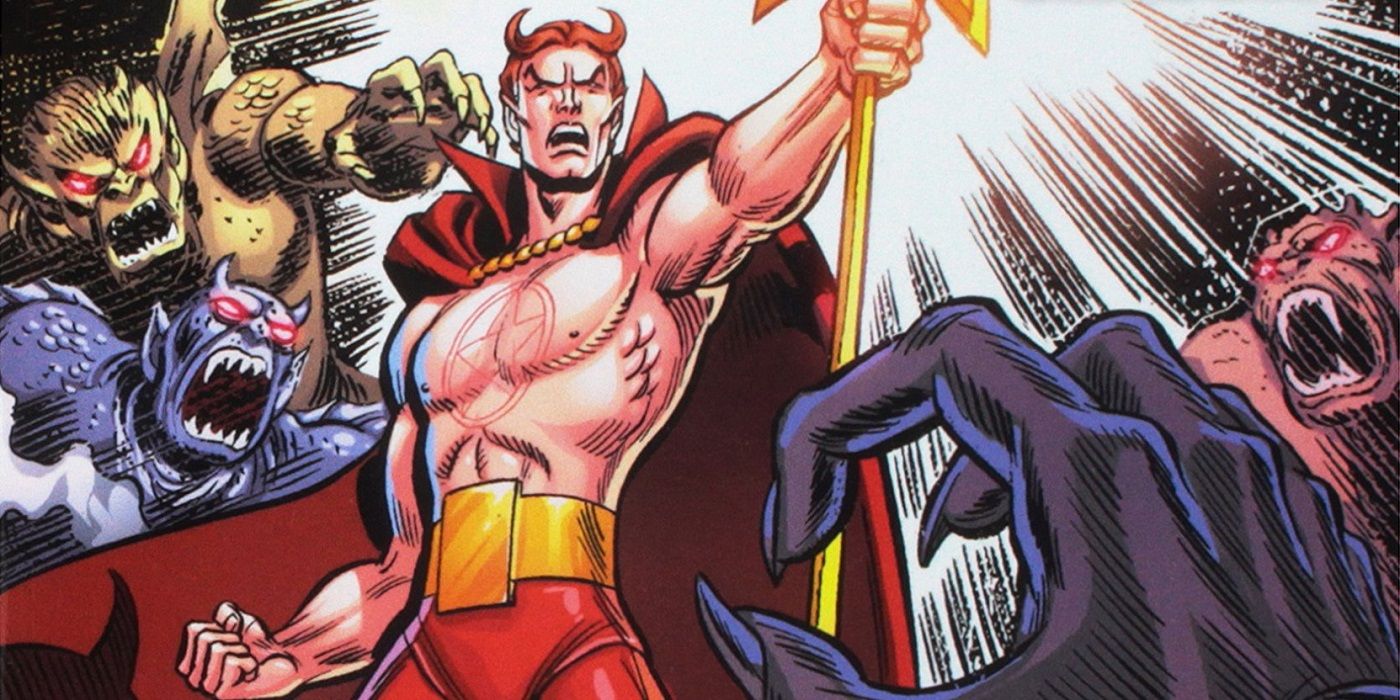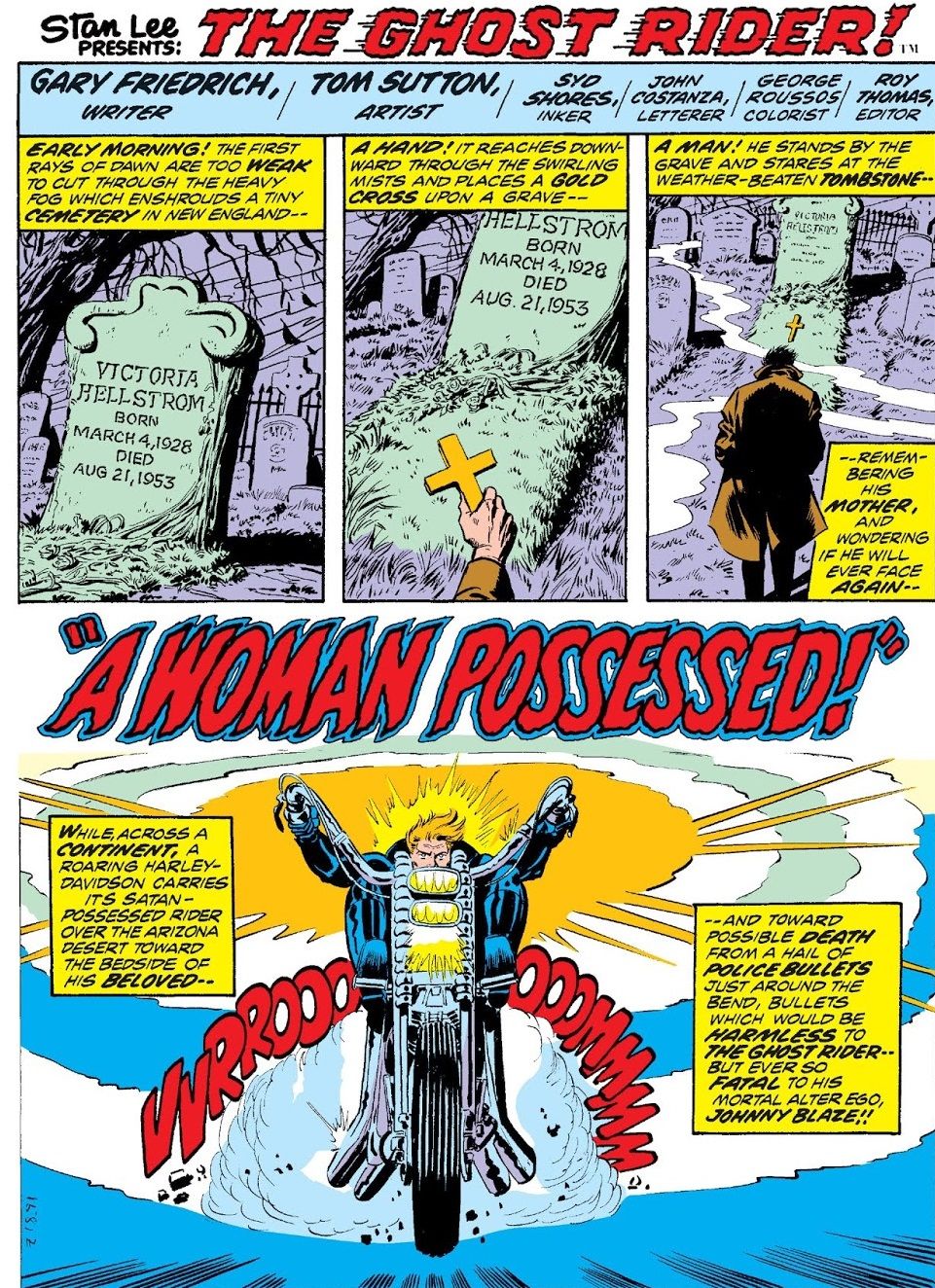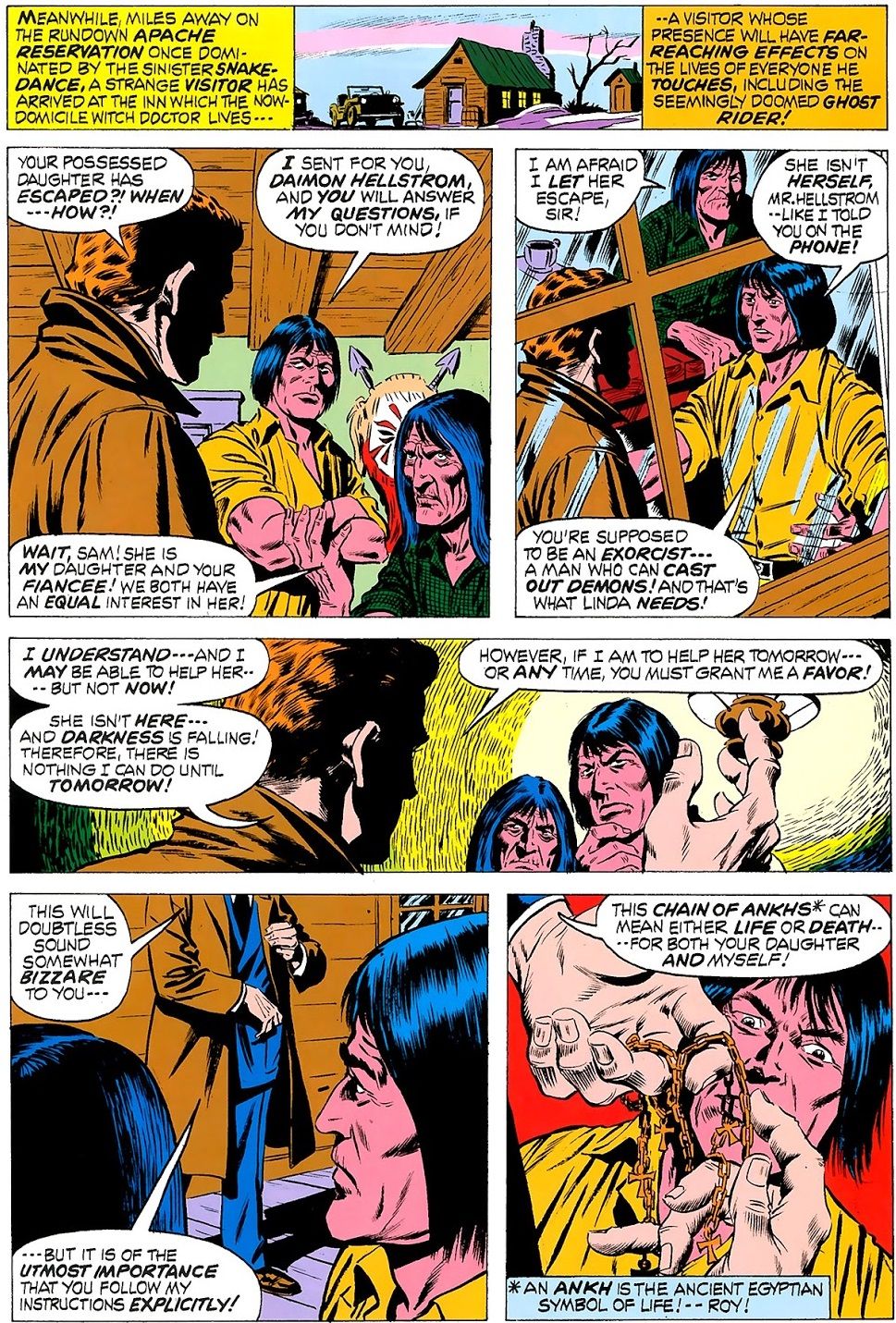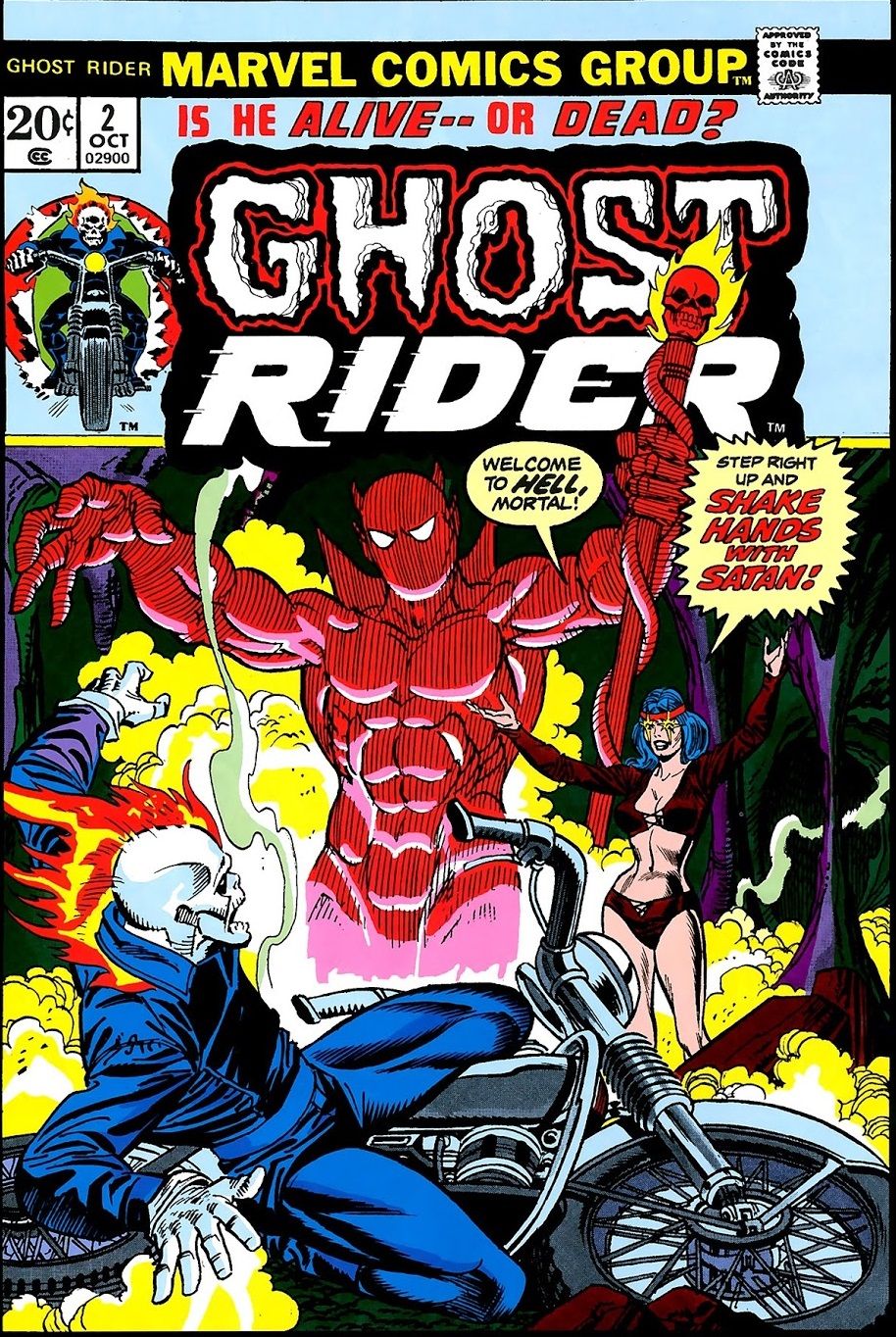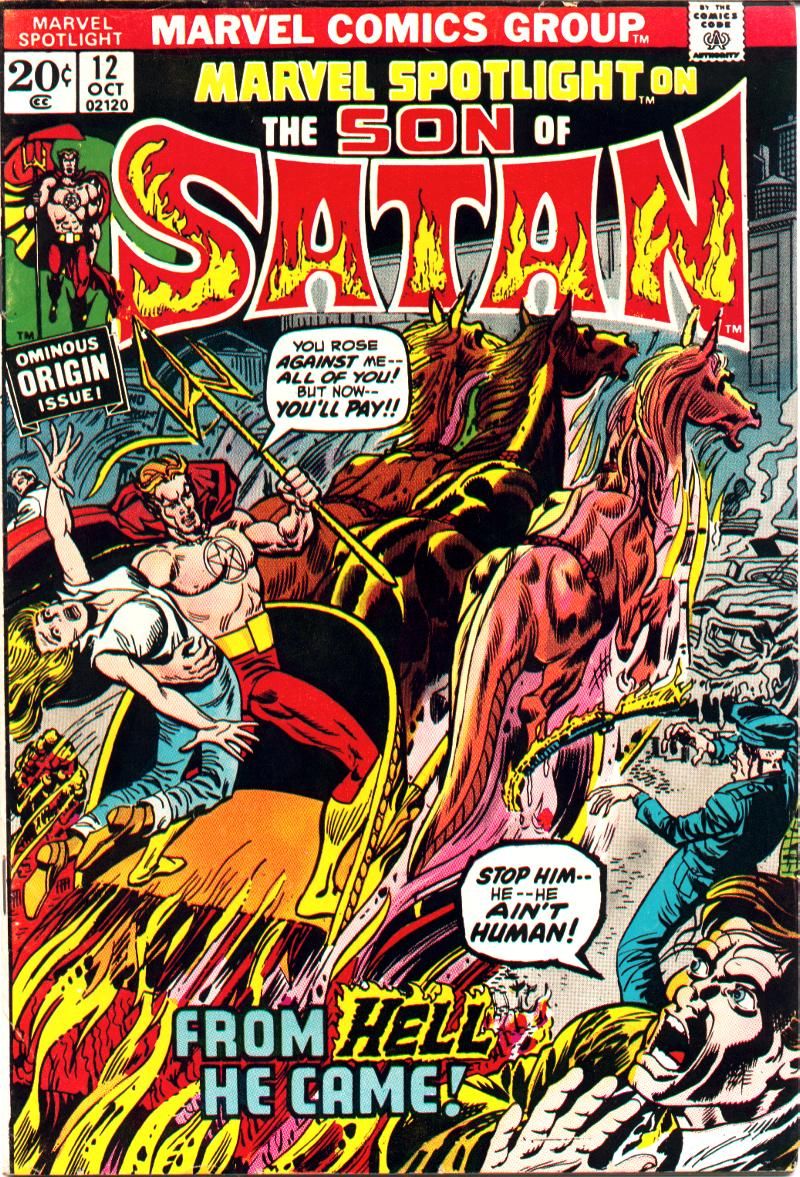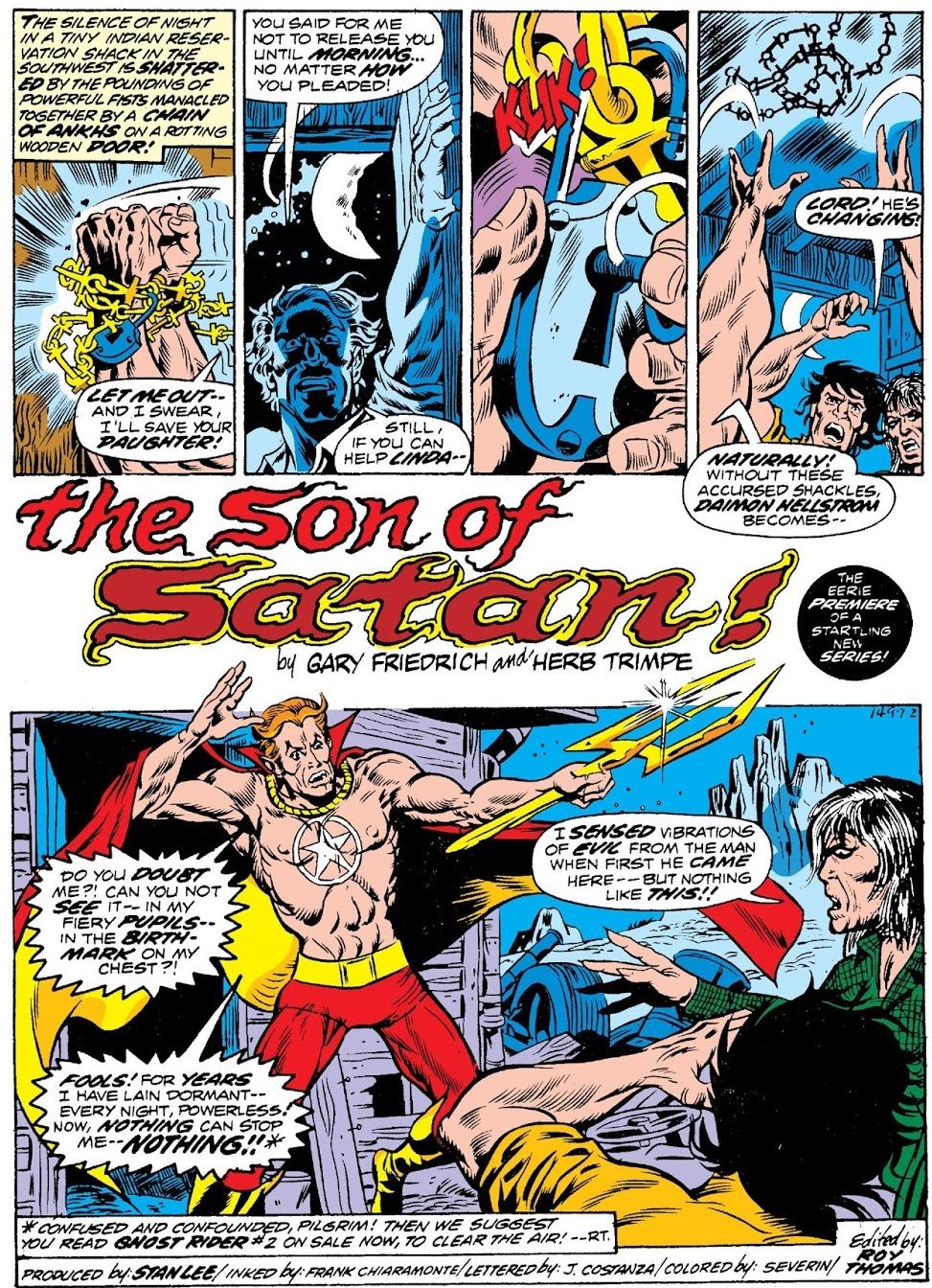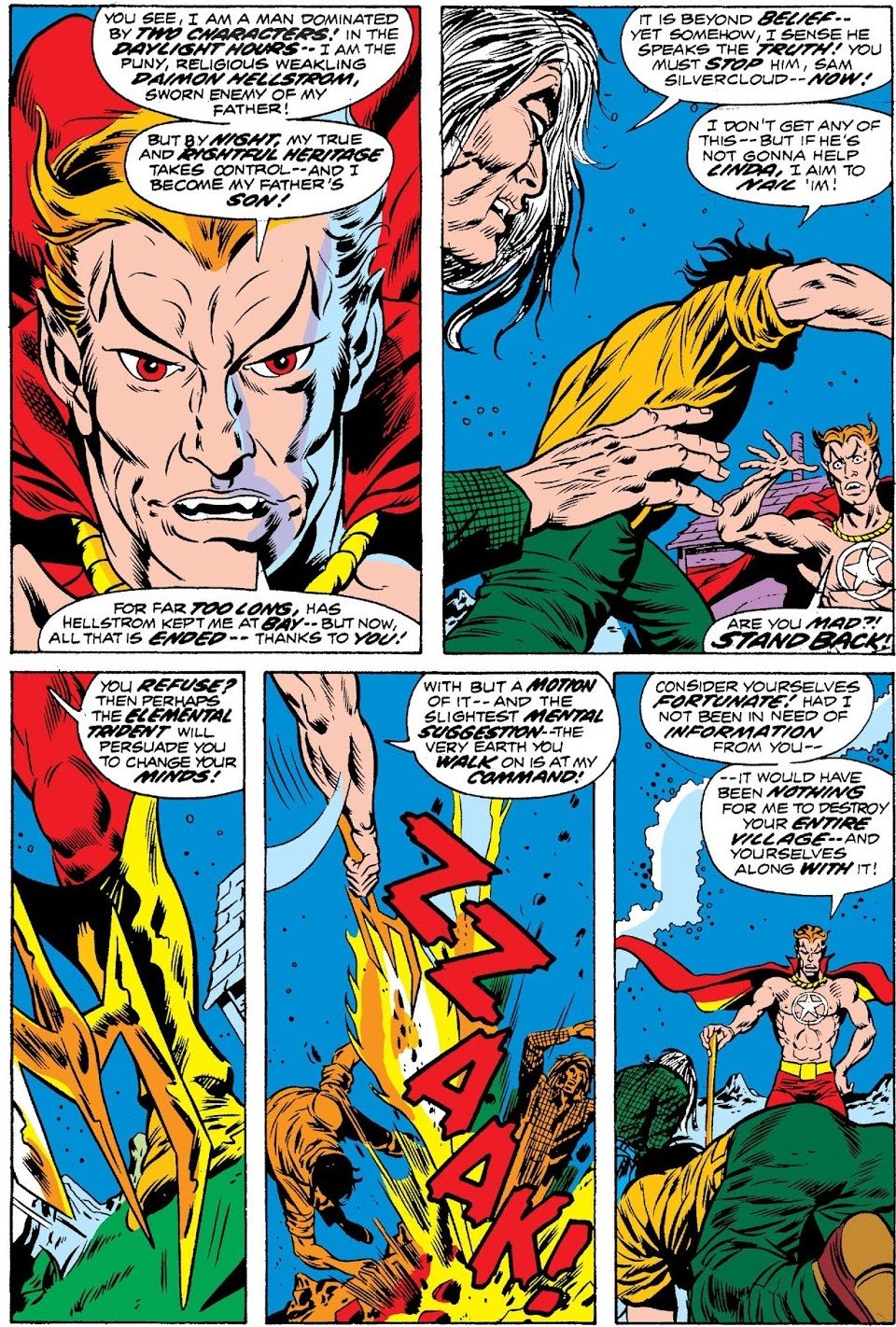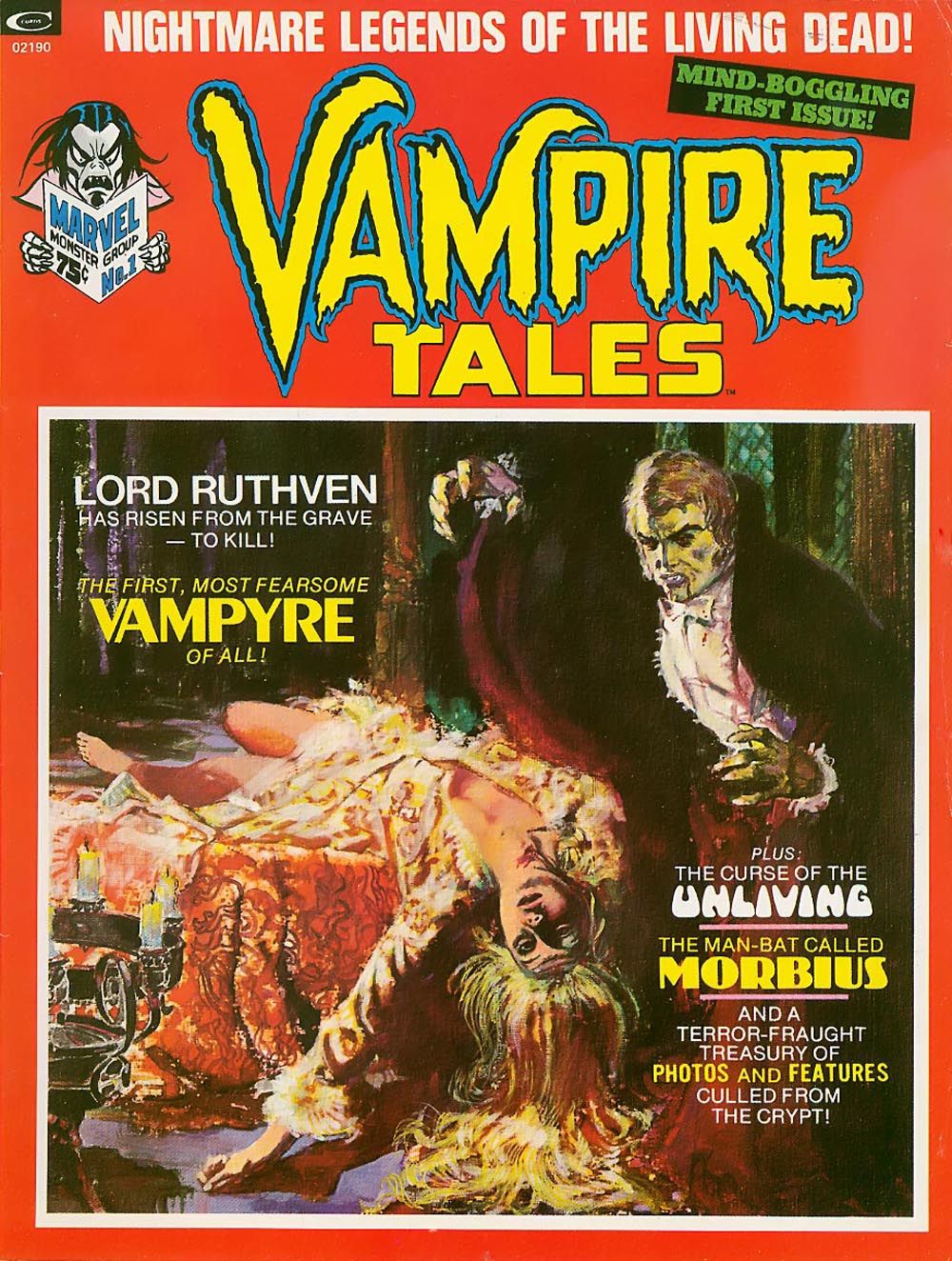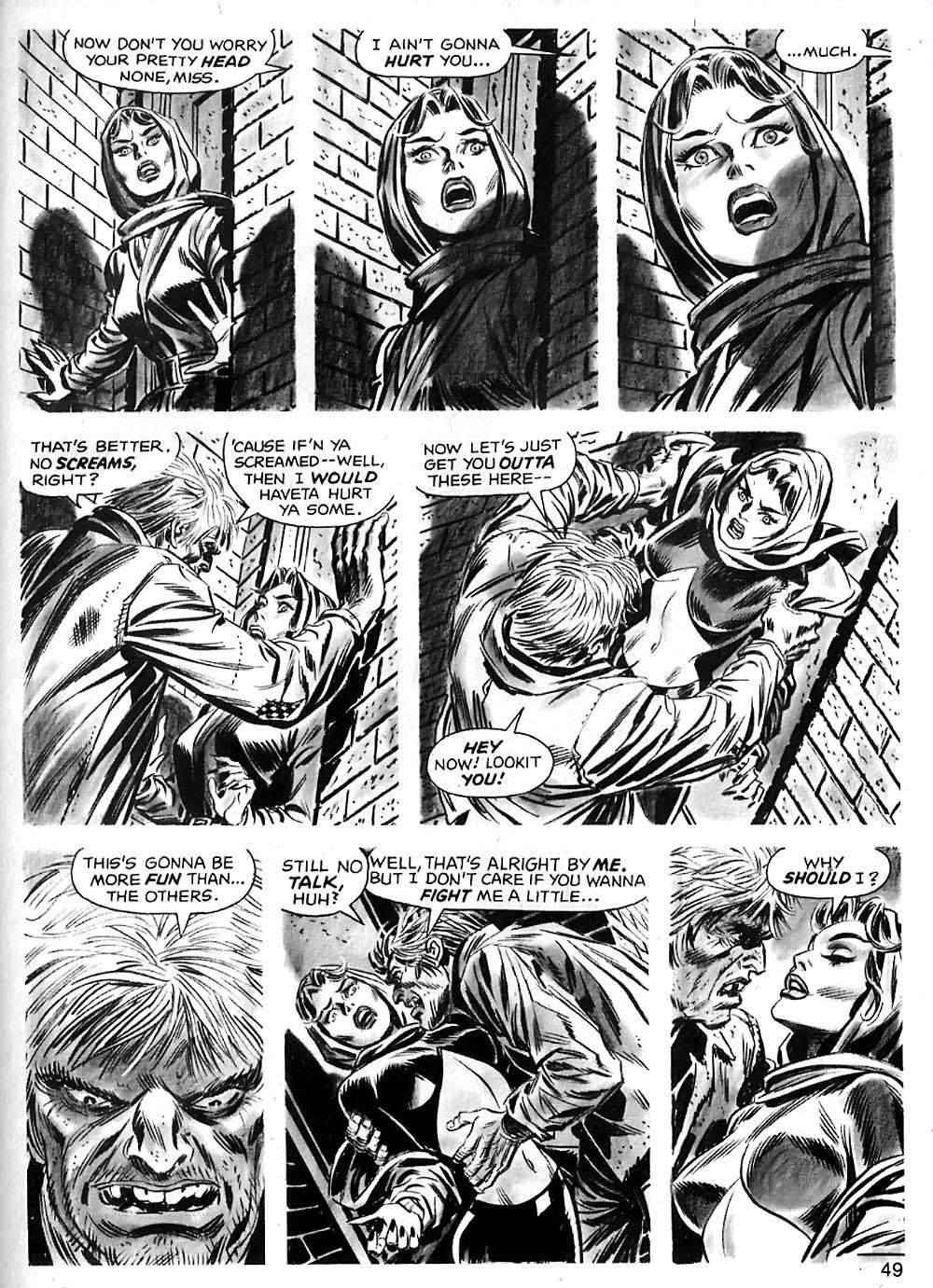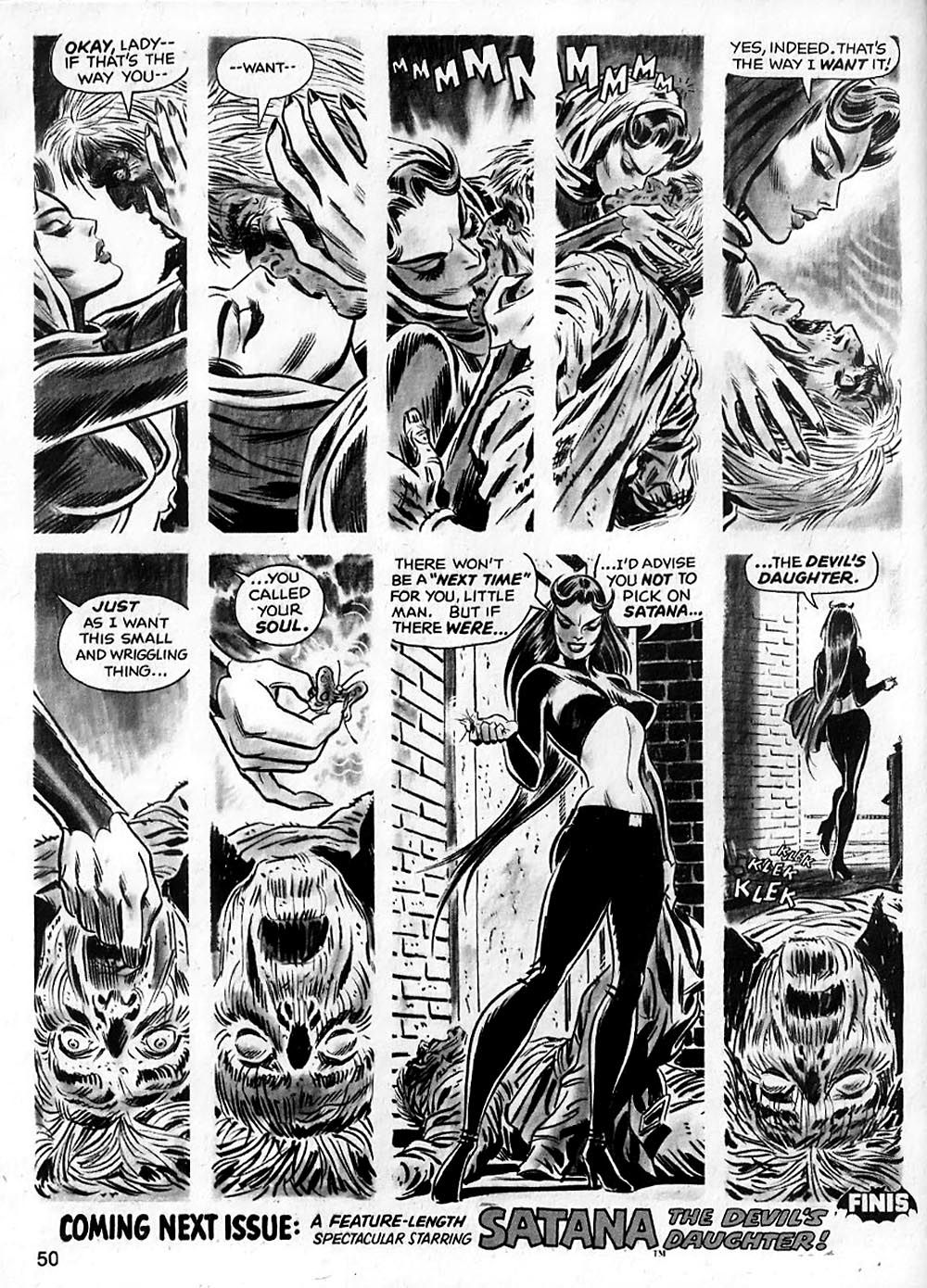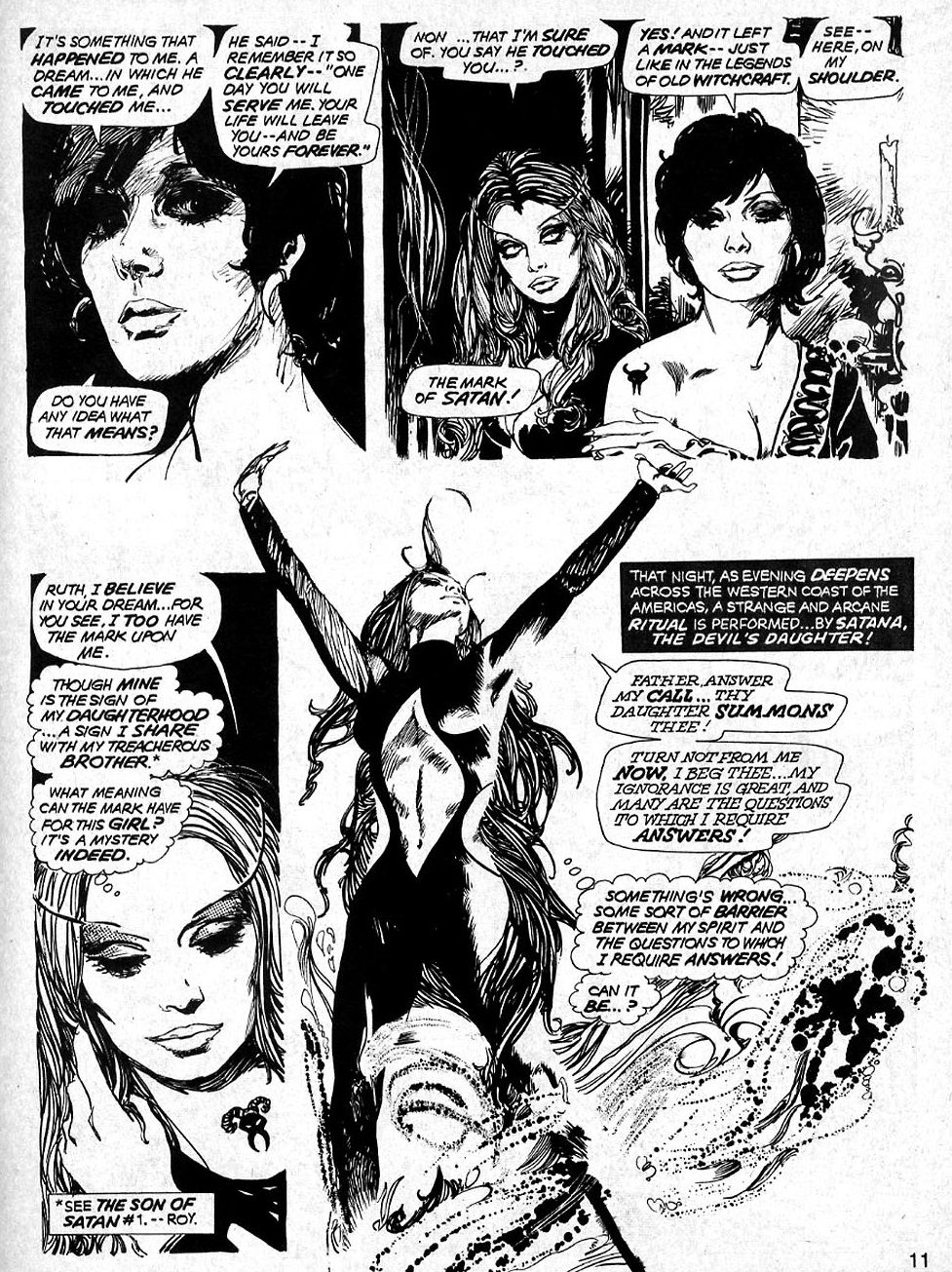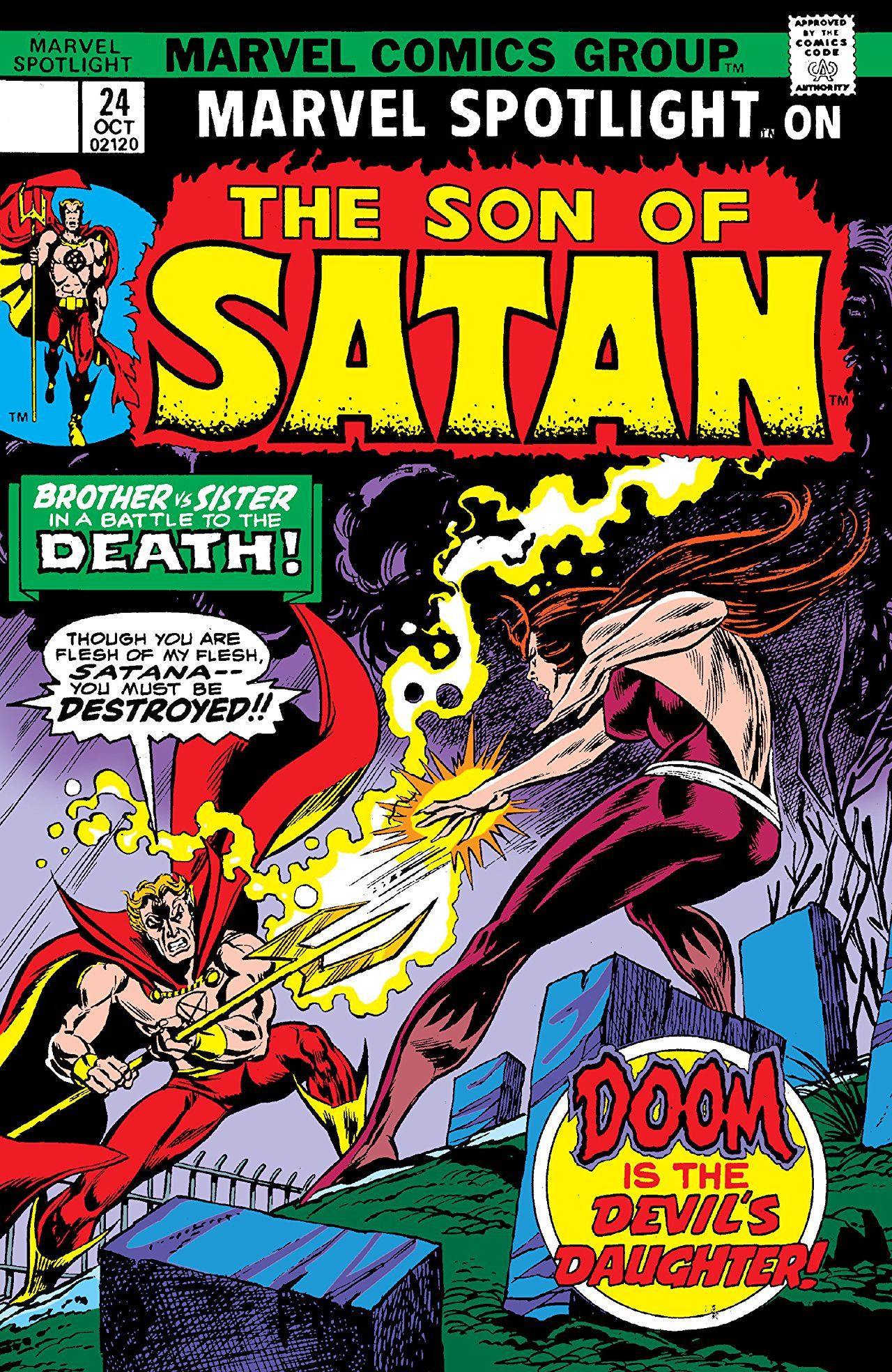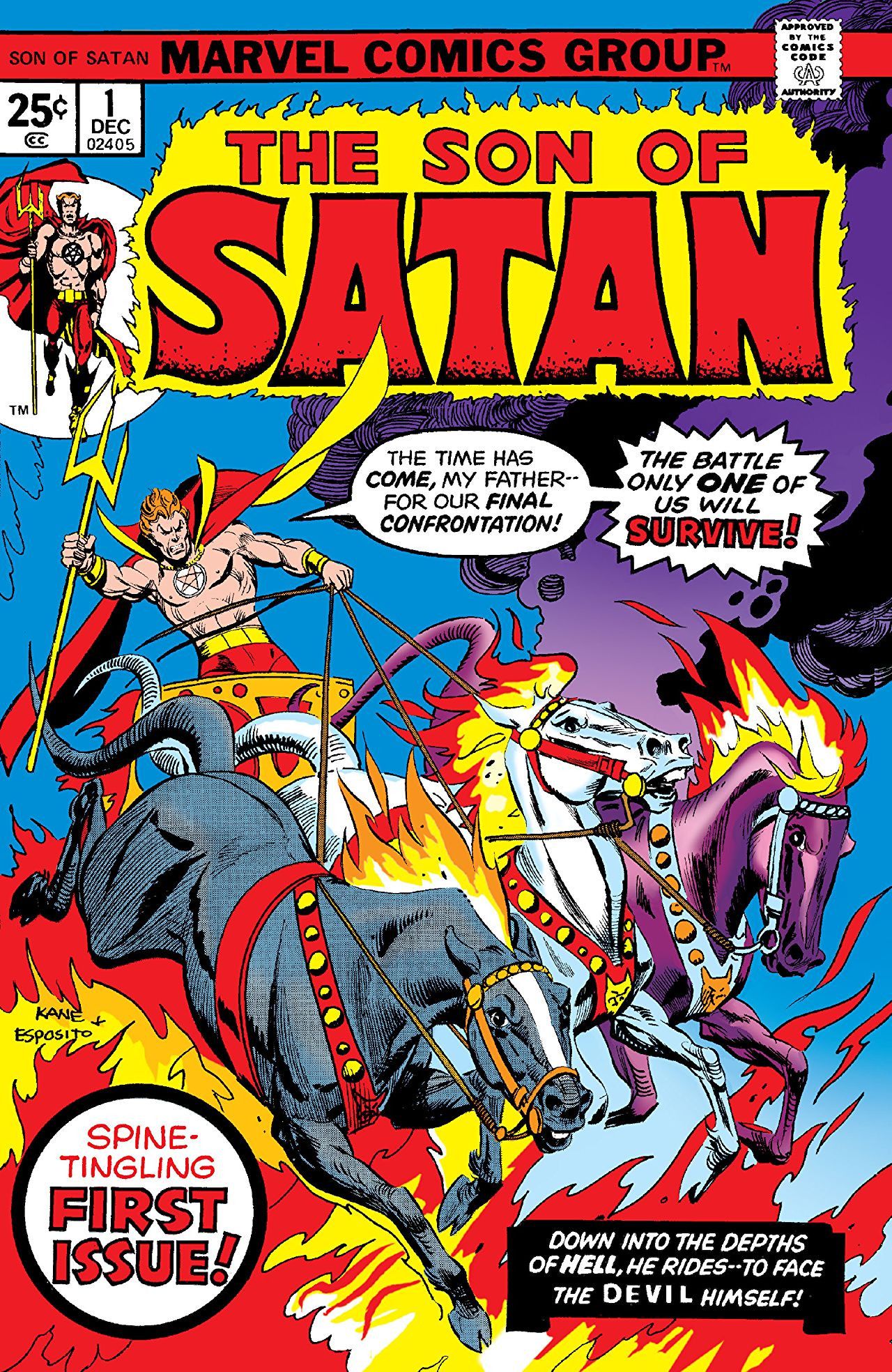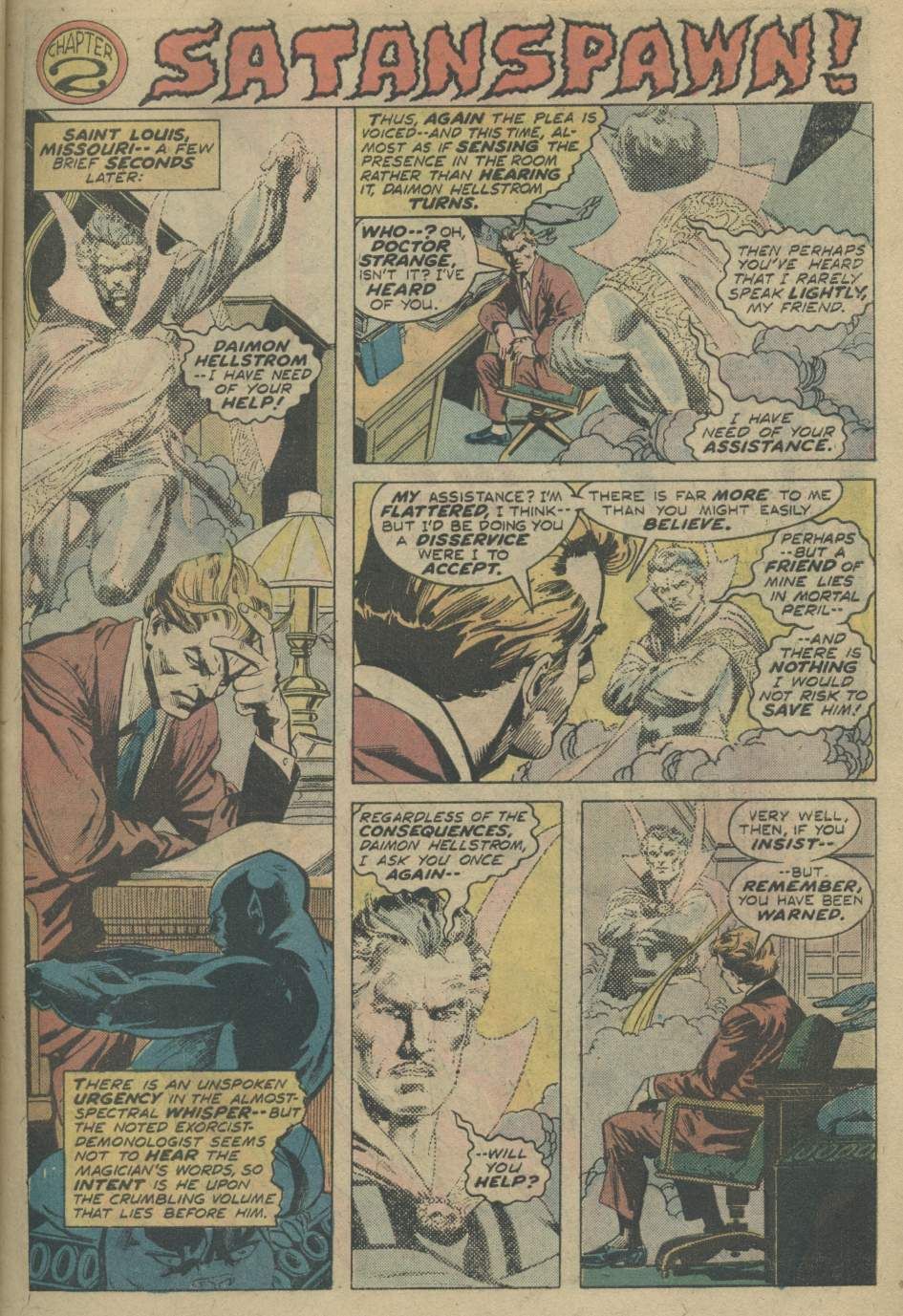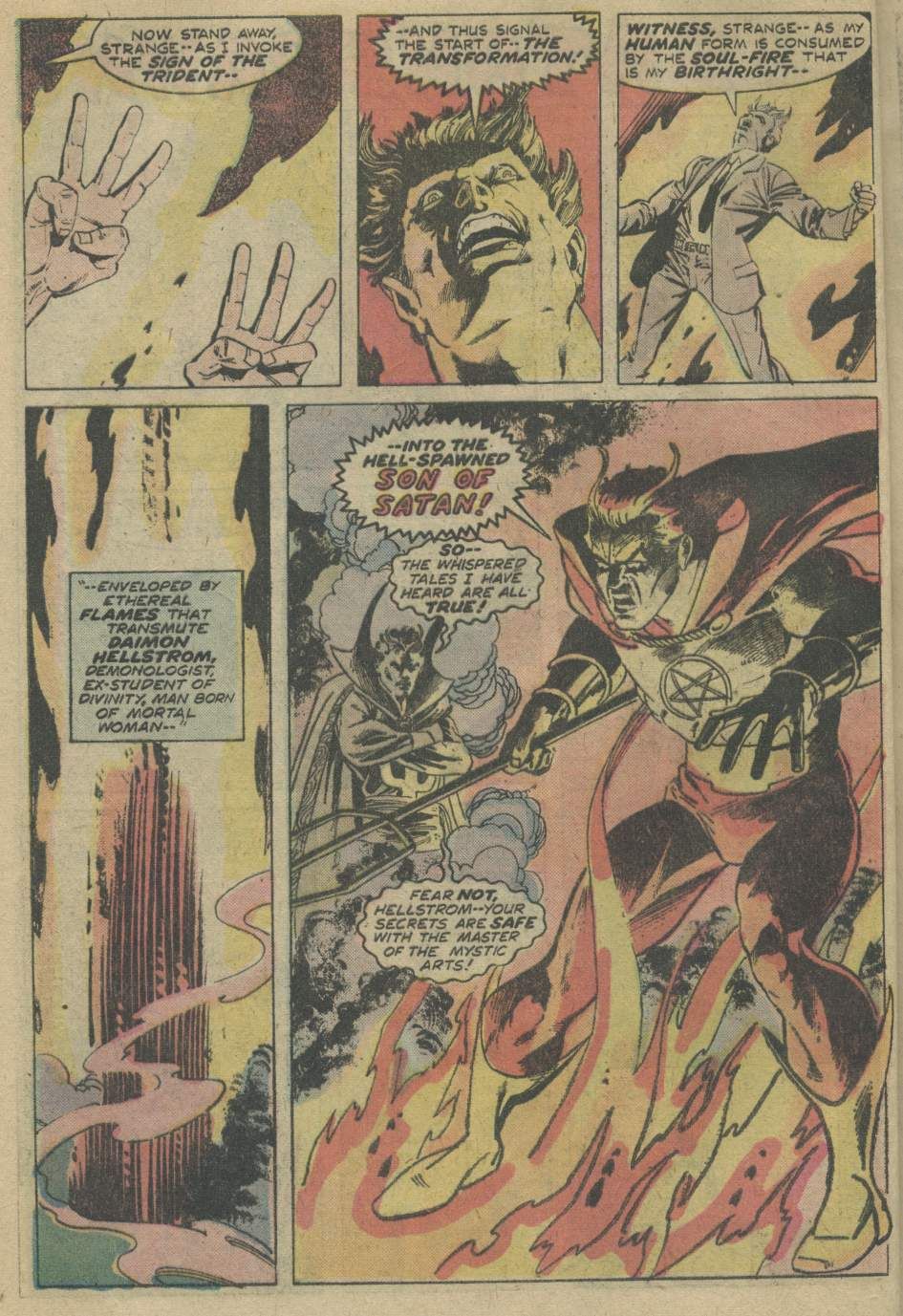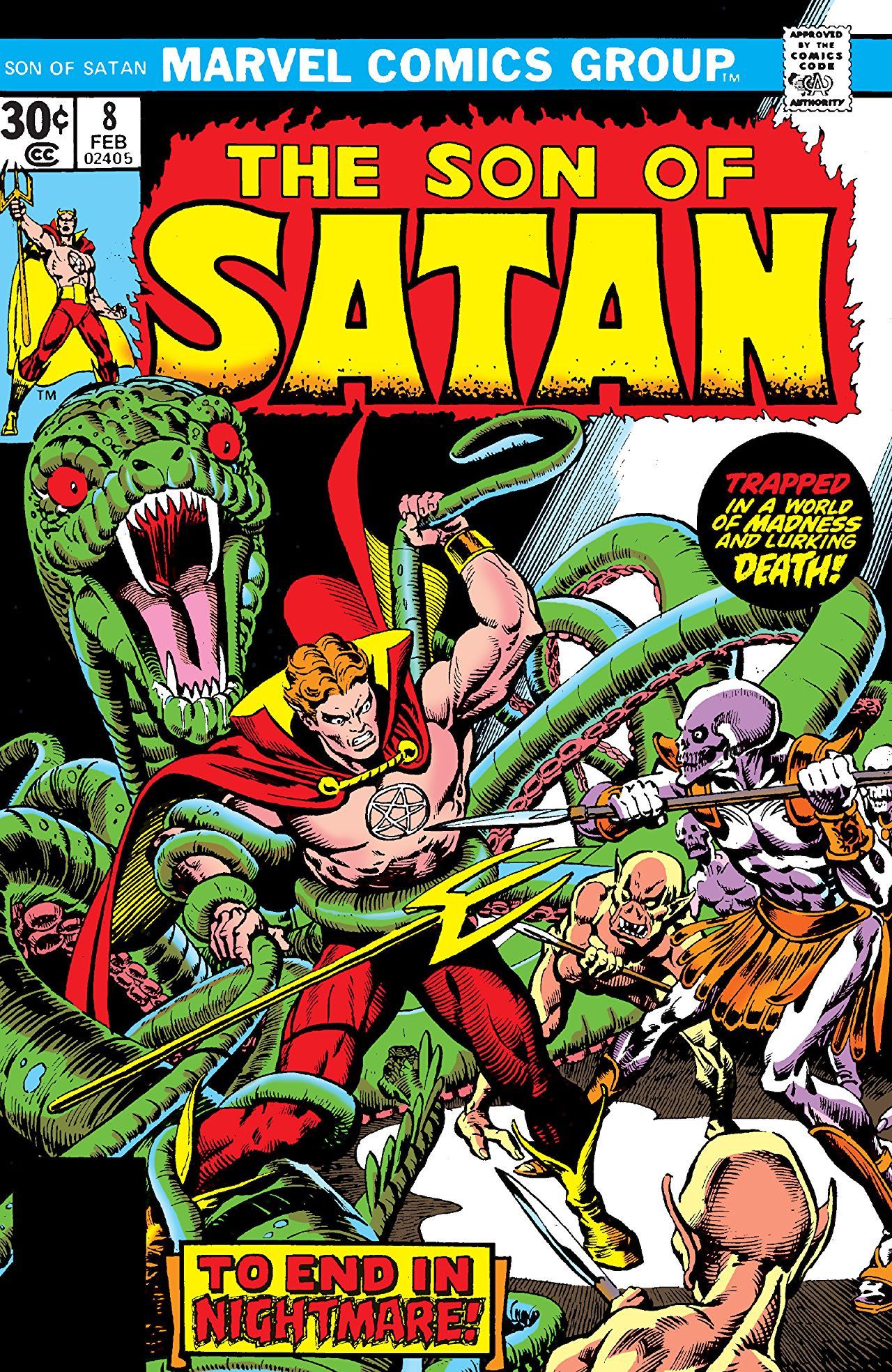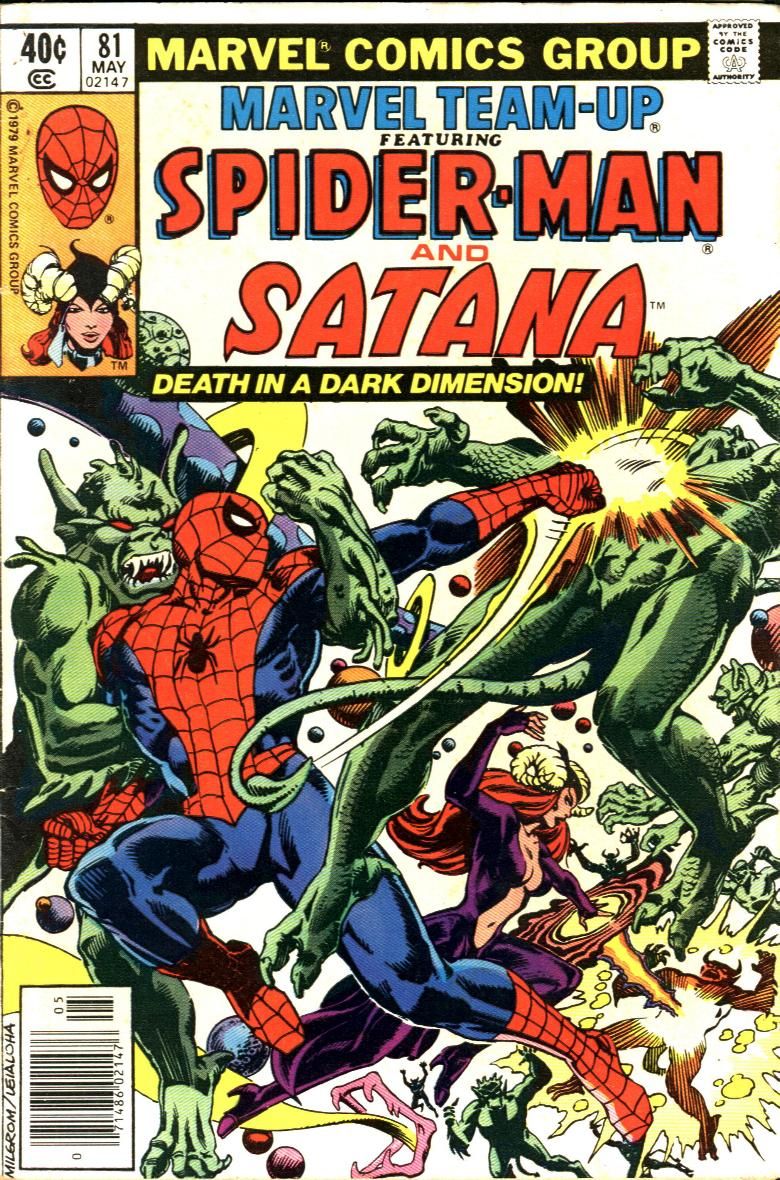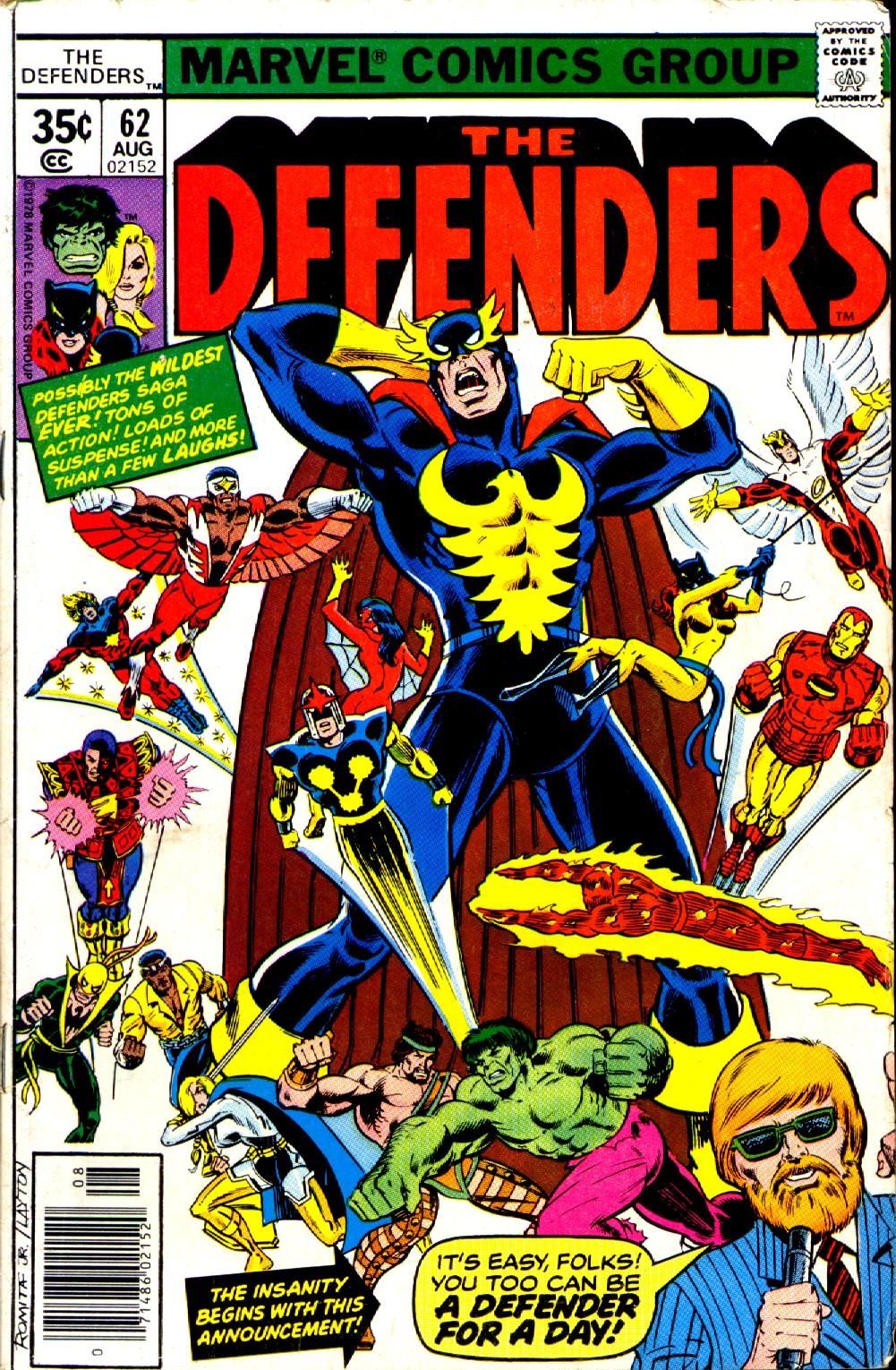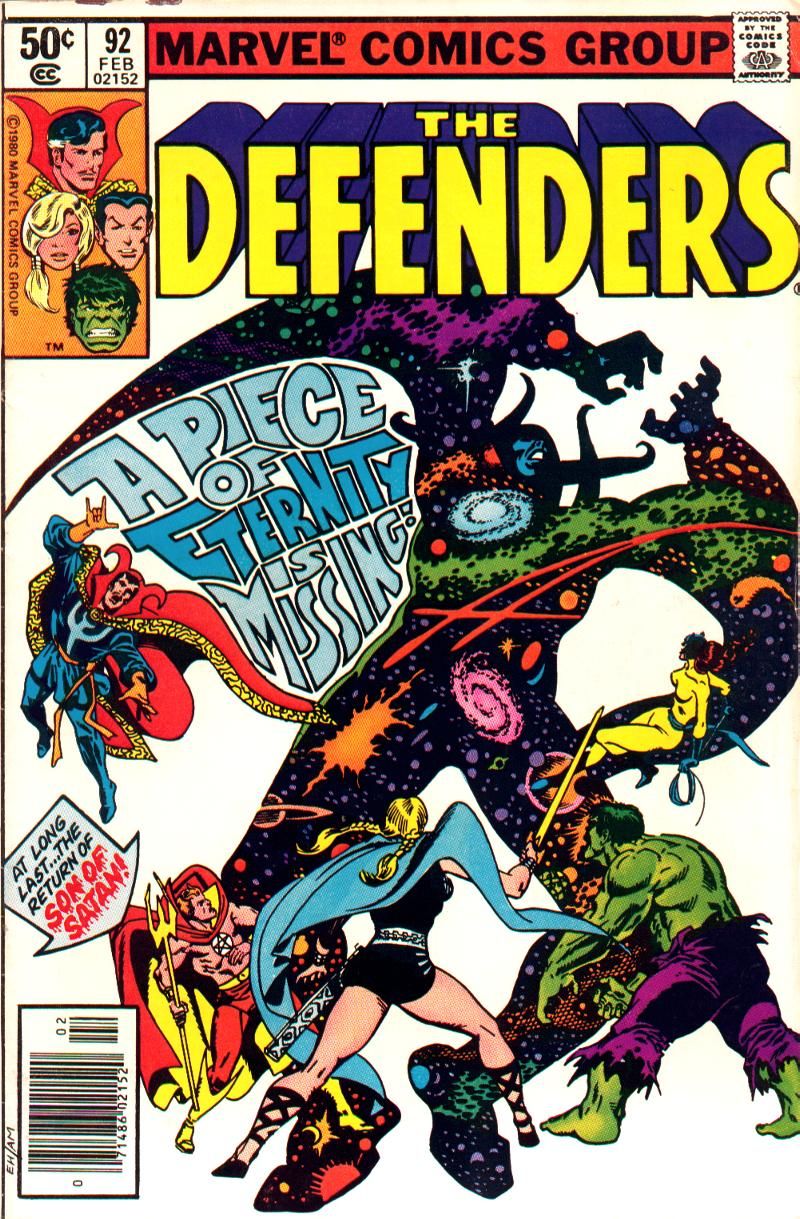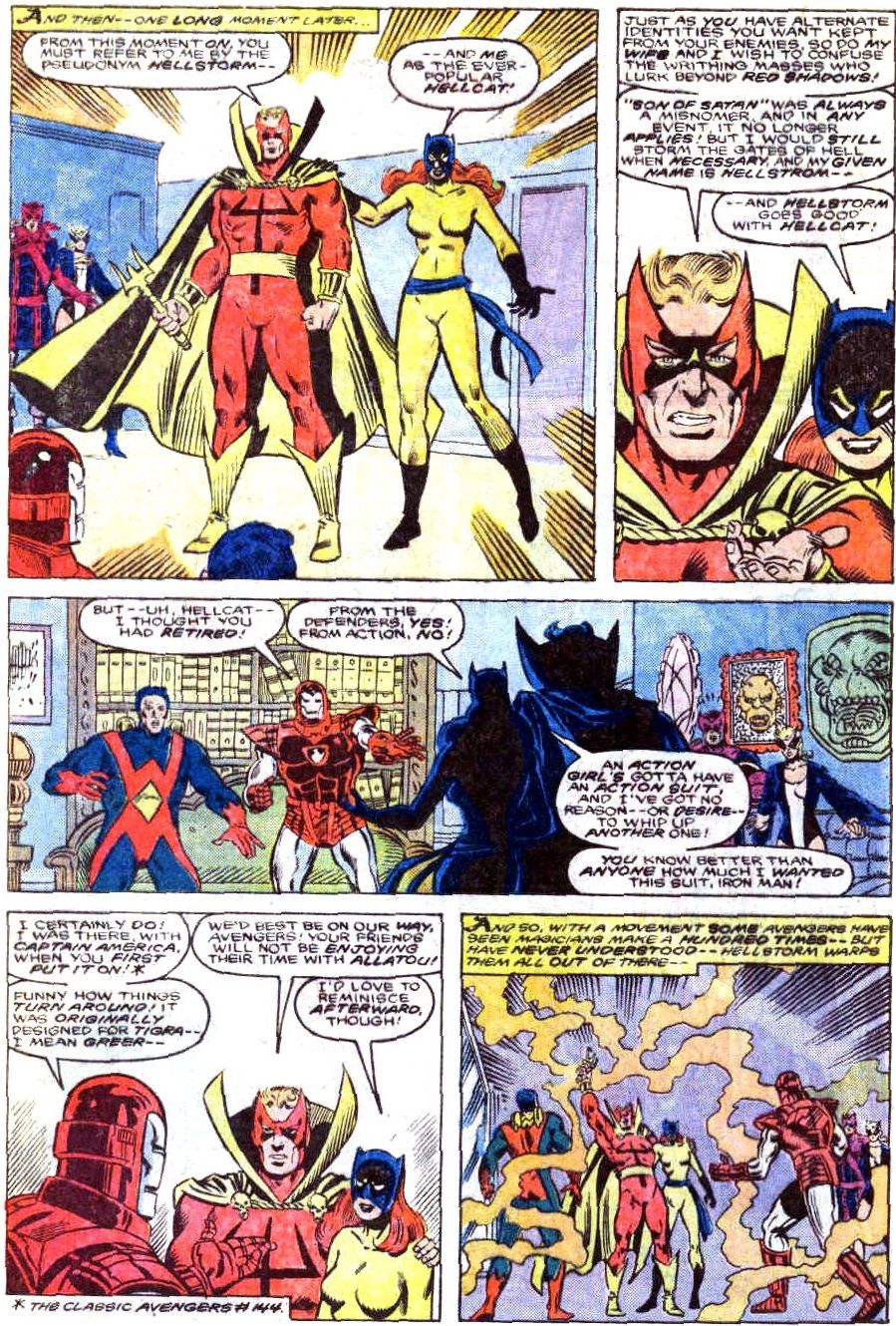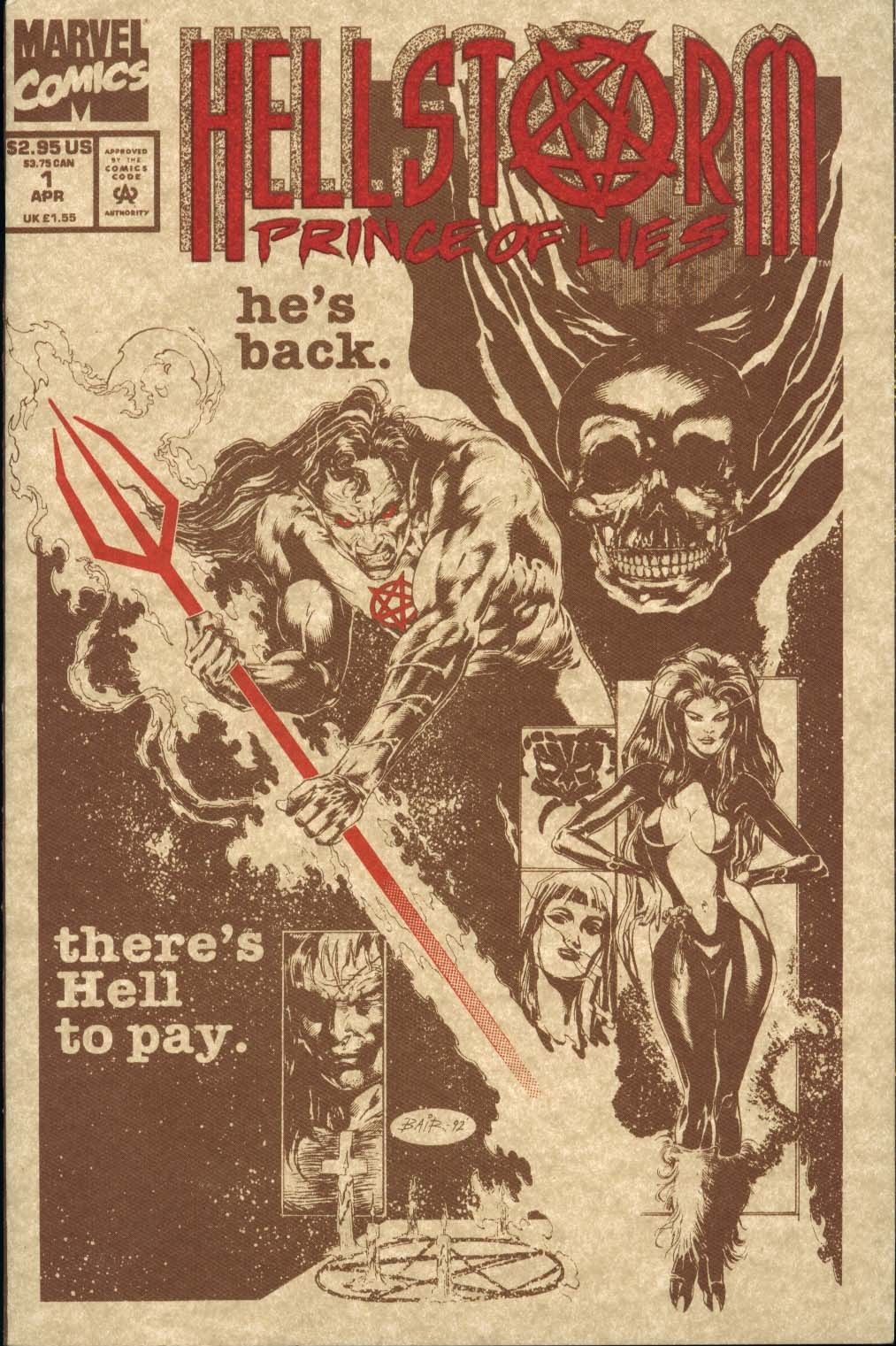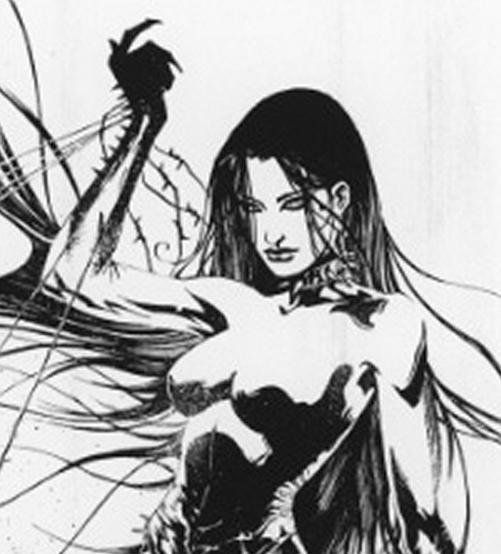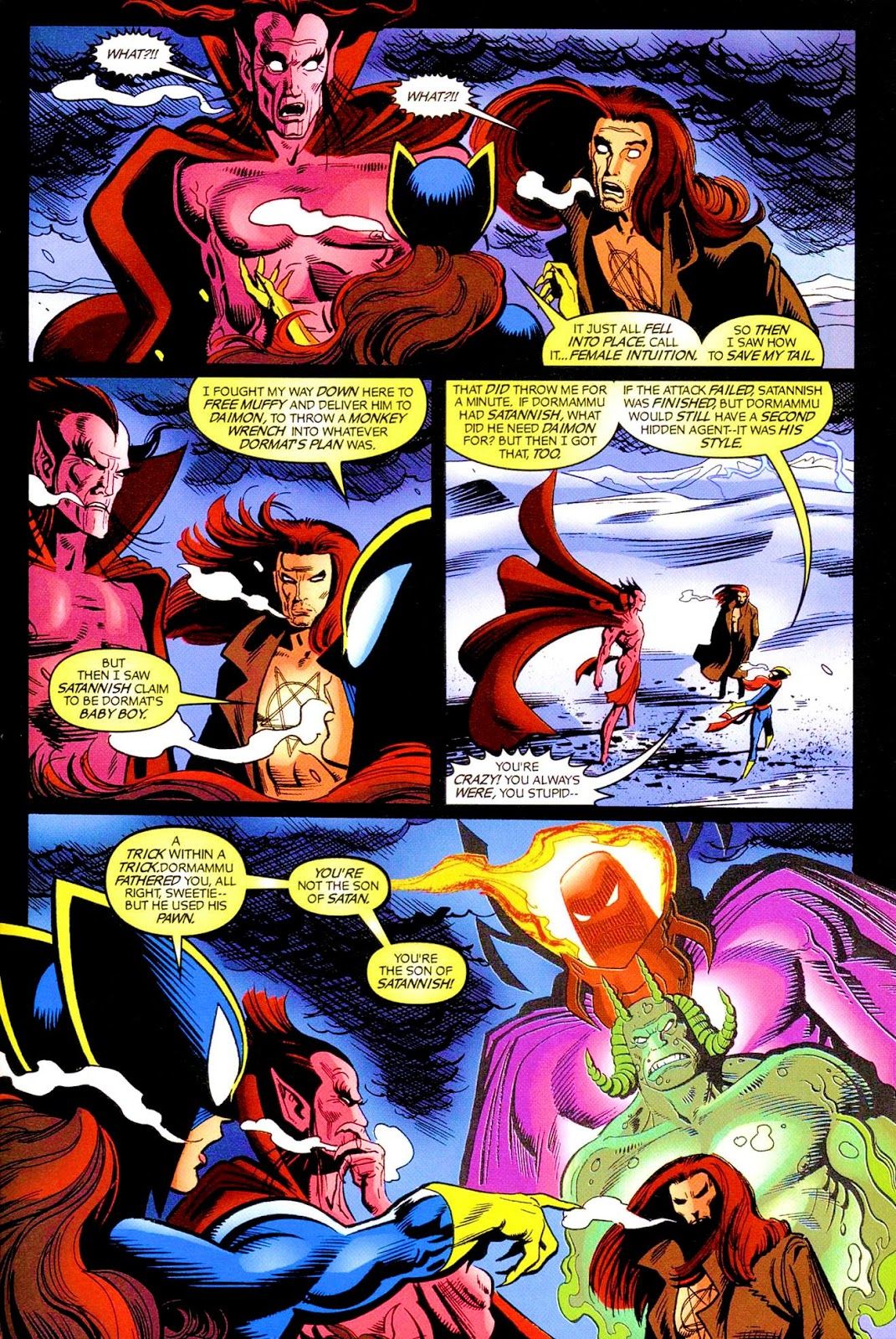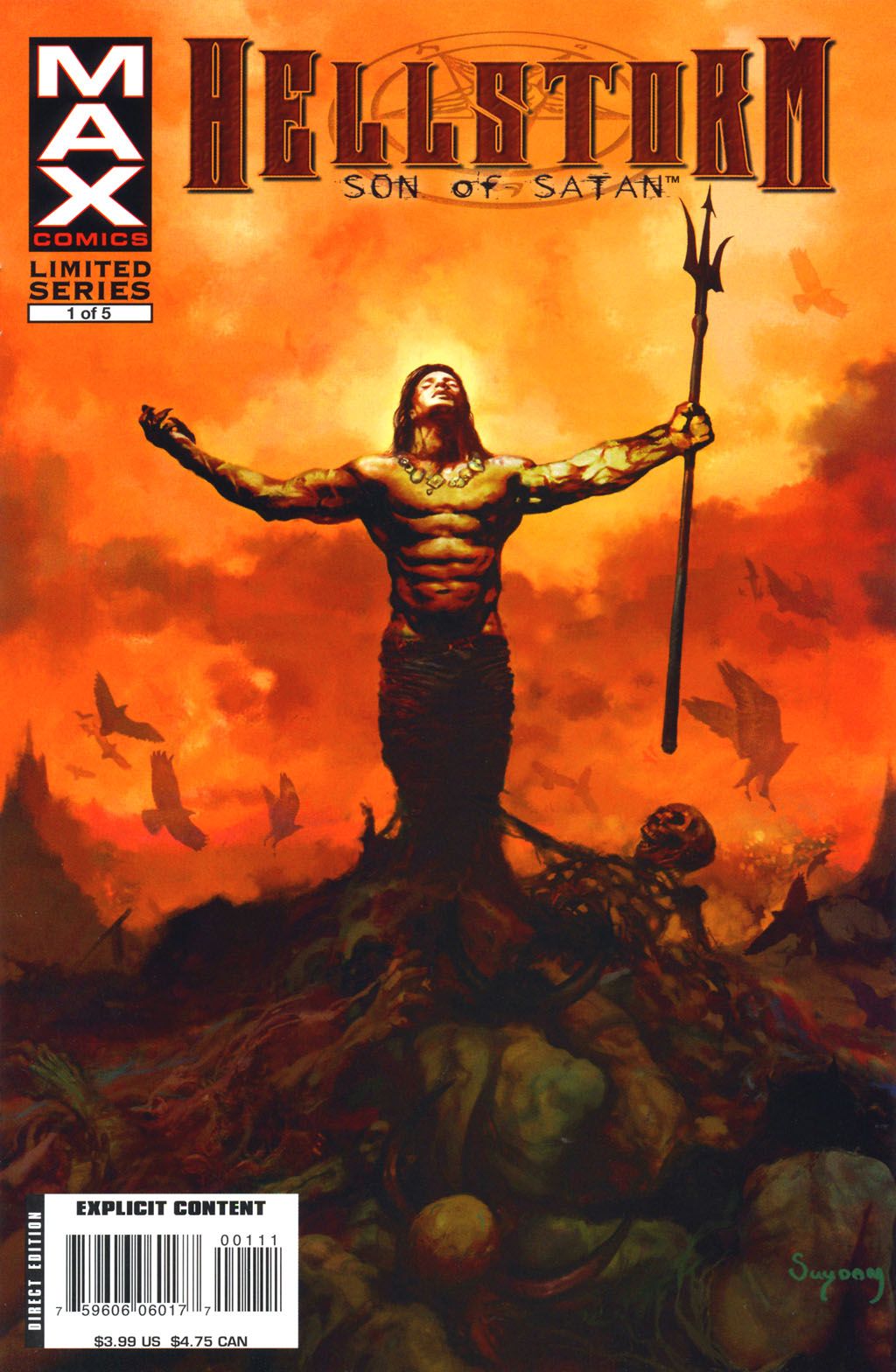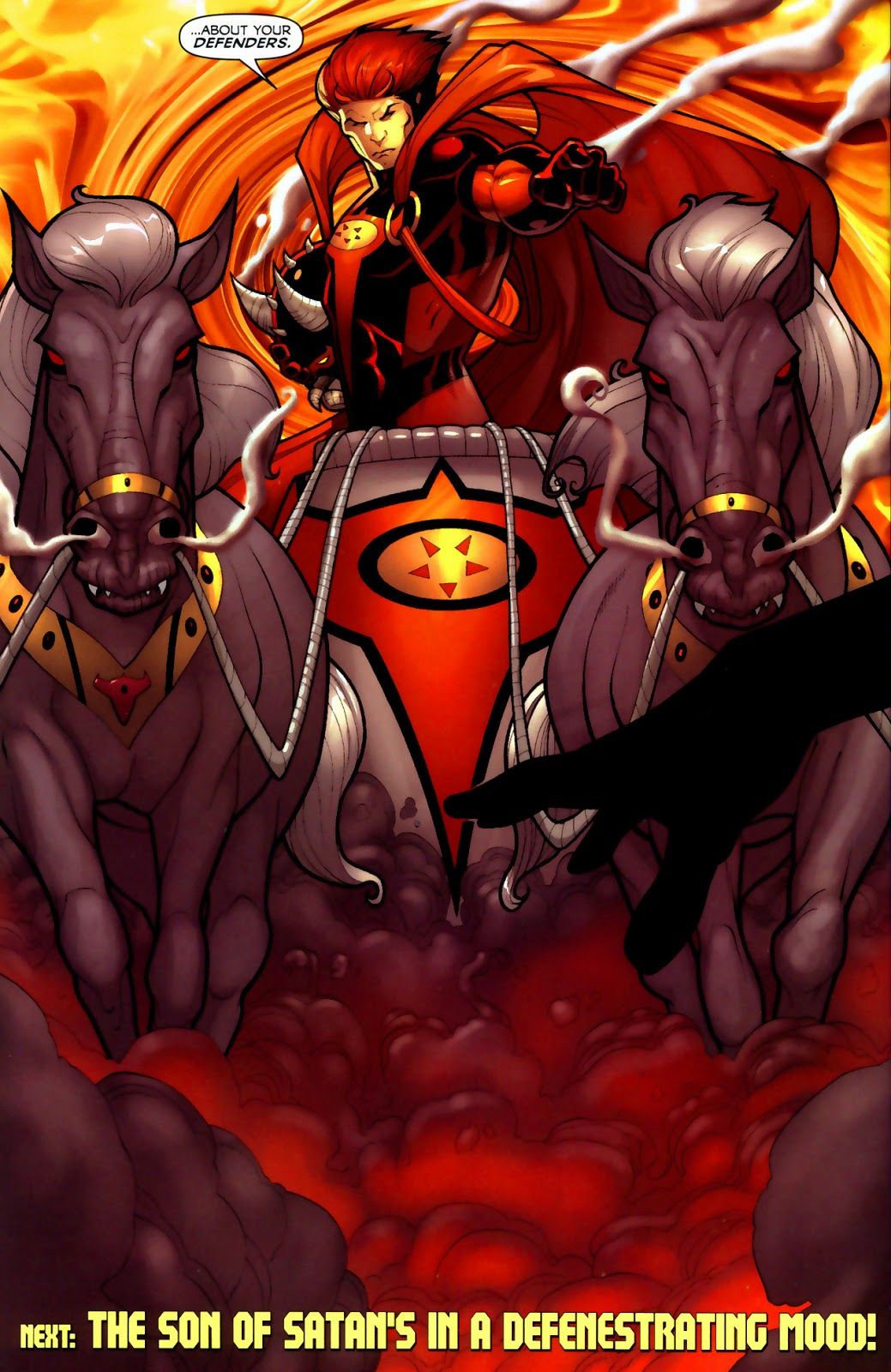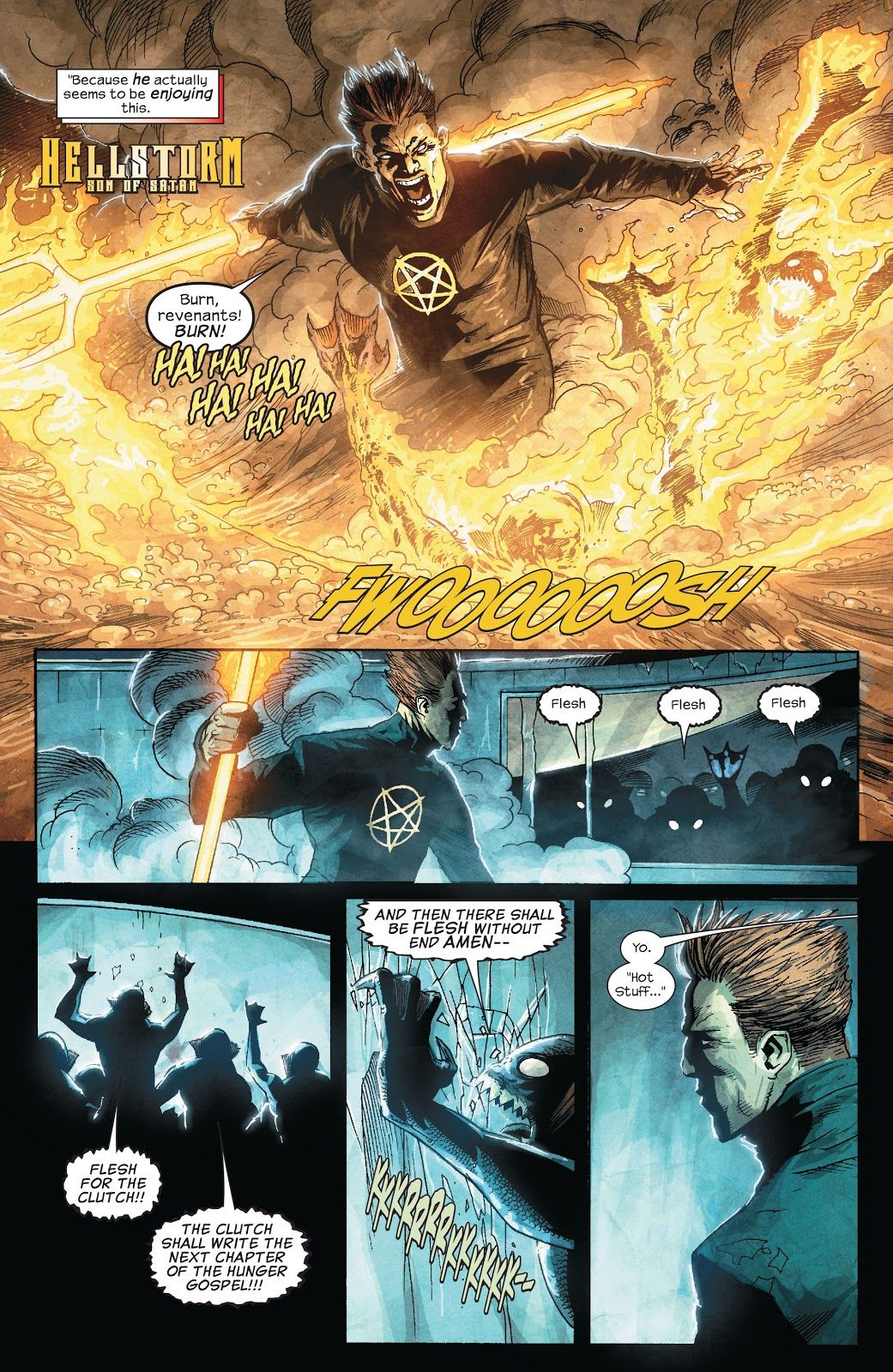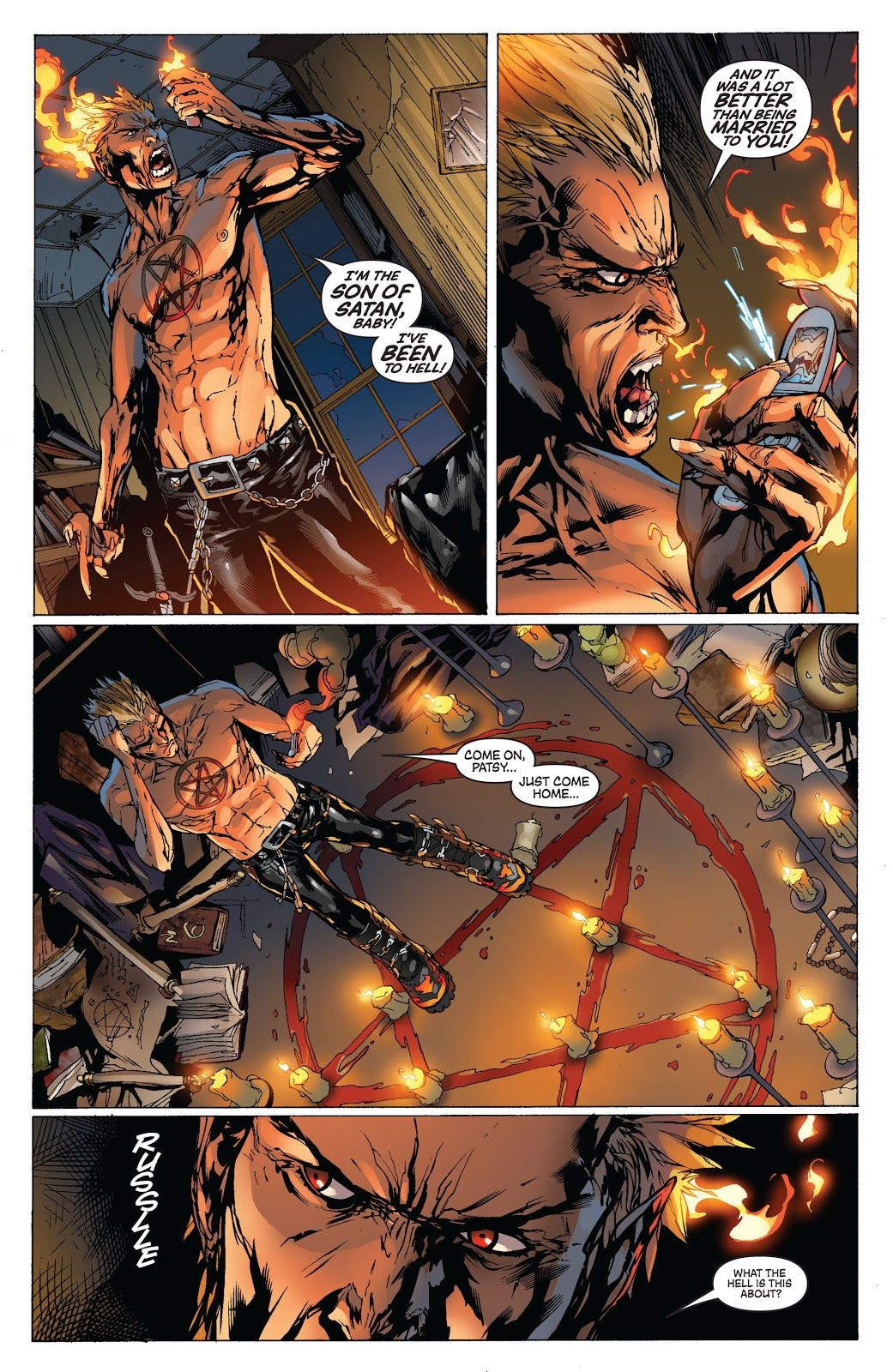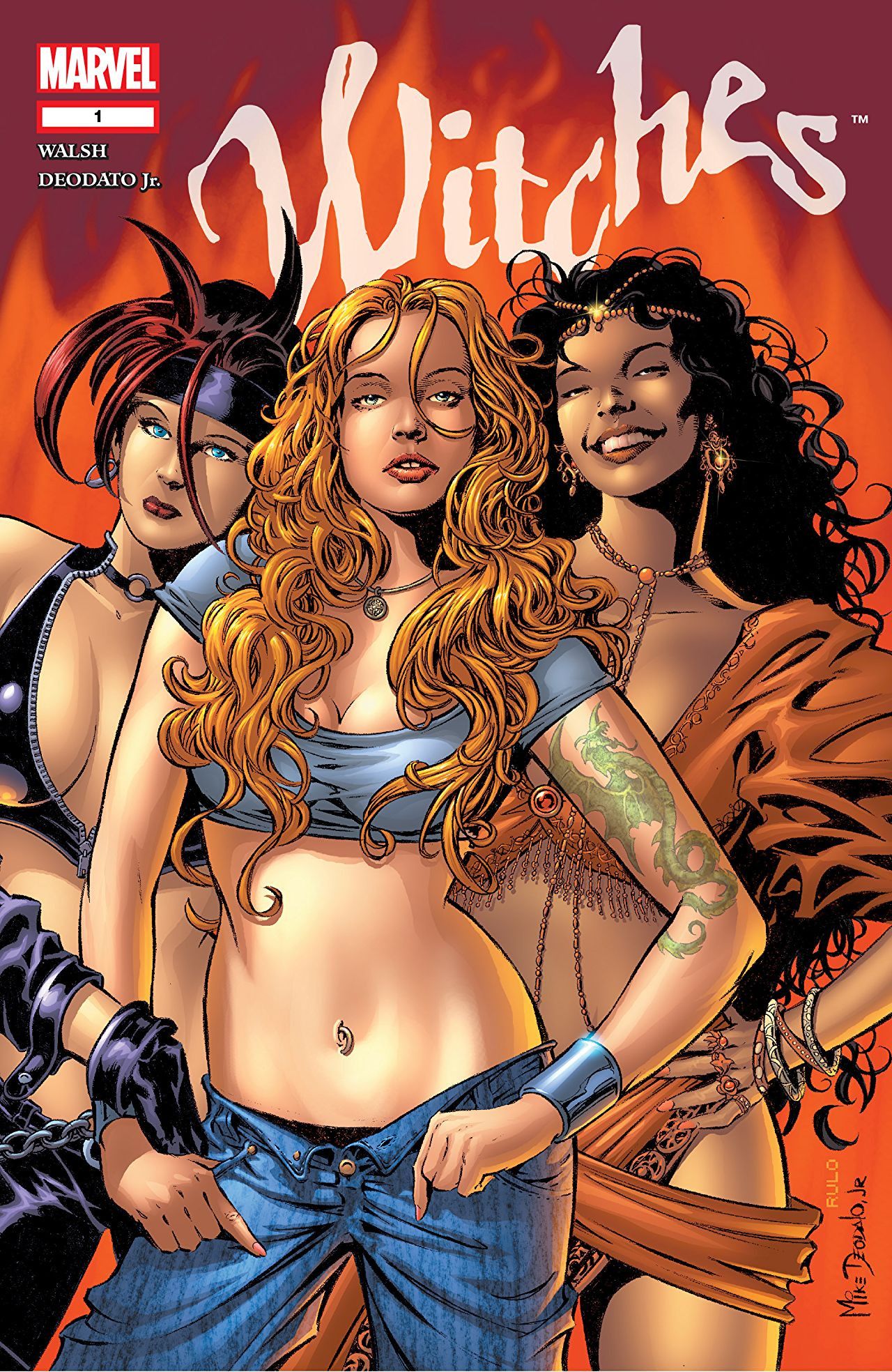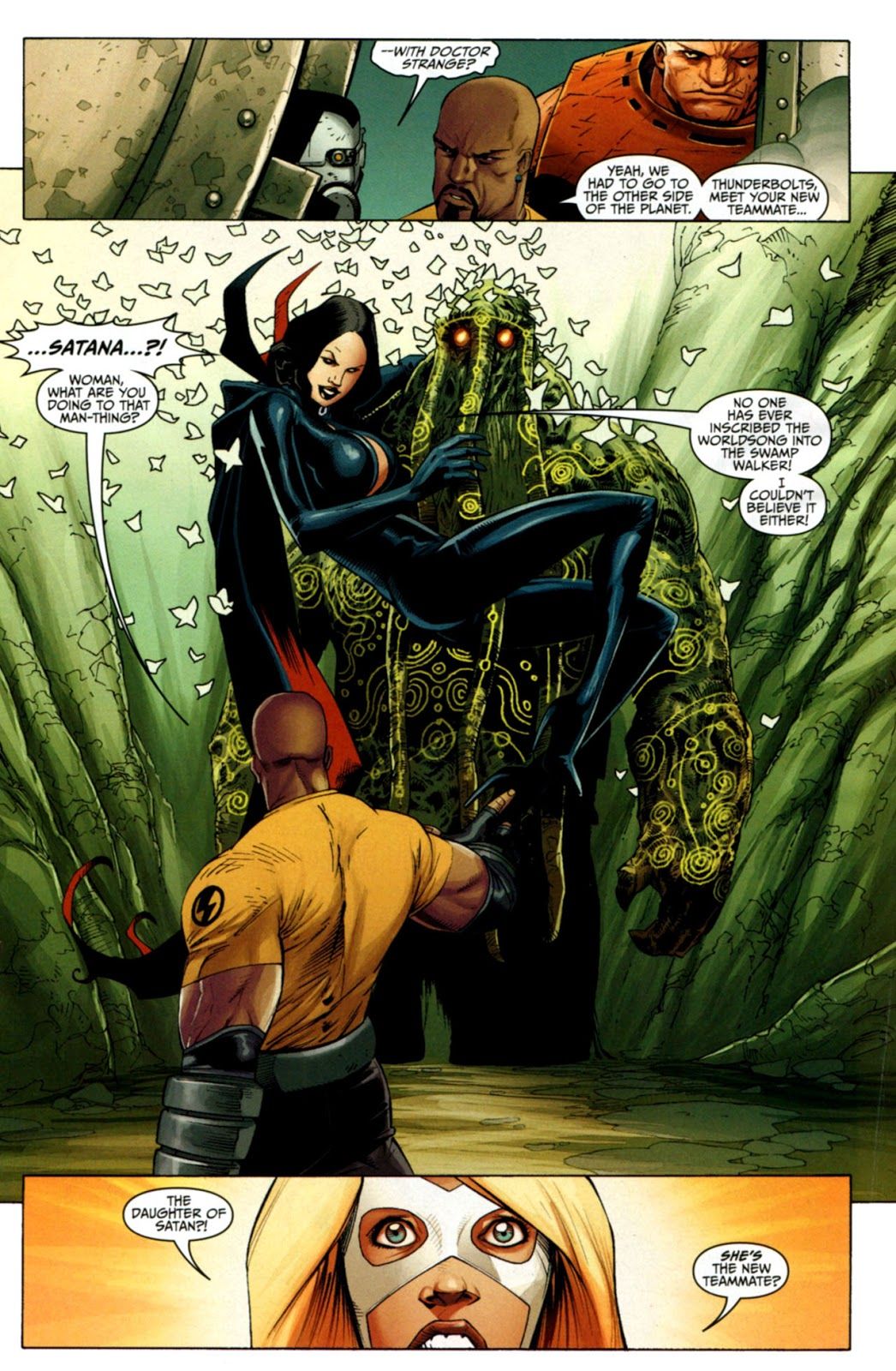Back in May, Hulu announced that the television streaming service would be launching both a Ghost Rider series, as well as a Helstrom series. It was notable in the announcement how Helstrom's name was spelled. This is the first time that "hell" has literally been removed from the name of the character, who debuted in 1973's Ghost Rider #1 as Daimon Hellstrom, the Son of Satan.
While this is the latest change regarding his name, it essentially follows an ongoing evolution through the years that has resulted in his name being "softened" as the Satan connection has been de-emphasized. The same goes for his sister, who will be appearing on the series as Ana Helstrom, instead of her original name in the comics, Satana!
In the early 1970s, the Comics Code Authority relaxed the restrictions in comics for the depiction of horror-themed characters. Marvel quickly responded to the new standards by releasing a number of new horror characters, including Werewolf by Night, Ghost Rider (both who made their debuts in the pages of Marvel Spotlight) and Dracula in The Tomb of Dracula.
Ghost Rider, like Werewolf by Night, soon graduated into his own ongoing series. In that first issue (by Gary Friedrich, Tom Sutton and Syd Shores), we meet a mysterious man at the grave of a woman named Hellstrom...
In the next issue, he introduces himself as Daimon Hellstrom, an expert exorcist who will help a family get their daughter back from Satan....
It is important to remember that at this point in time, Ghost Rider's origin was that his powers came from a deal that he cut with Satan, so Satan was a recurring villain in the early days of Ghost Rider's comic book series. Here he is on the cover of Ghost Rider #2....
In that issue, of course, the people who agreed to follow Hellstrom's rules (and not let him out of his locked room until the morning, no matter what he tells them) do not follow his rules and when they free him, he has transformed into the Son of Satan, which we see in the next part of the storyline, in Marvel Spotlight #12...
As Ghost Rider was exiting Marvel Spotlight, Marvel transitioned into Son of Satan being the new lead feature and he explains himself to the people who freed him at the start of the issue (by Friedrich, Herb Trimpe and Frank Chiaramonte)...
At the same time that the Comics Code was relaxed, Marvel was finally successfully getting into the black and white comic book magazine business (after a failed effort in 1968 with Spectacular Spider-Man ended after just two issues were released). Black and white comic book magazines allowed publishers to avoid submitting their books for Comics Code approval and so Marvel could release content that would never fly in a Code-approved book. For the most part, the company just used their newly introduced horror characters to star in these new magazines (which were almost all horror-themed, at first, as Warren Publishing was having a lot of success with their black and white horror magazines, like Creepy, Eerie and Vampirella), like Morbius starring in Vampire Tales....
However, in Vampire Tales #2, Roy Thomas and John Romita introduced a new character. We see a young woman being pulled into an alley where a man attempts to assault her. However, he is in for quite a shock when it turns out that the young woman is actually Satana, the daughter of Satan!
In the following issue of Vampire Tales, Gerry Conway and Esteban Maroto established that Satana is, in fact, the daughter of the same Satan who was currently part of Ghost Rider and Son Satan's Marvel Spotlight feature....
Fascinatingly, even though they were for completely different audiences, due to the issues with the Comic Code, Marvel treated the black and white magazine stories as part of the same overall continuity as their Code-approved books (notably, it was a black and white magazine story that first introduced the Punisher's real name and his origin).
Therefore, Satana ultimately made the transition to the Code-approved Marvel Spotlight for a confrontation with her brother...
It is truly fascinating to see how different generations have different hang-ups when it comes to content. We think of the past as being almost inherently more innocent than the present, and yet during the 1940s, readers did not balk at the idea of Batman snapping the necks of bad guys or mowing villains down with a machine gun. Similarly, then, it is interesting to see just how accepting the general public was to the use of Satan in these mid-1970s comic books.
Eventually, Hellstrom become the next character to graduate from Marvel Spotlight into his own ongoing series, titled, naturally, Son of Satan...
Around this time, Len Wein, Gil Kane and Klaus Janson had the Son of Satan help out the Defenders for the first time in Giant-Size Defenders #2. See as Doctor Strange contacts Damion Hellstrom to enlist the help of his demonic alter ego...
Son of Satan was a bit of a hard sell as an ongoing series and it came to a halt after just eight issues.
The rest of the 1970s were fairly bereft of appearances for the children of Satan, although Satana hilariously made an appearance in a Marvel Team-Up issue in 1979...
Spider-Man and Satana. I wonder what parents thought of that pairing on a cover?
Hellstrom showed up as one of the many possible new additions to the Defenders in Defenders #62, but it is interesting to note that he was one of the few possible applicants who does not actually show up on the cover...
Finally, in December 1980, J.M. DeMatteis brought Hellstrom back into the pages of Defenders, now as a full-time member of the series. Note that the character had been missing long enough for his cover appearance in the issue being described as "At long last...the return of the Son of Satan."
With the character now no longer being the lead of his own feature (and being in comic book limbo for three years at the point), DeMatteis had a good deal of freedom to develop the character and DeMatteis' approach was to play up the burgeoning humanity of the character. He had Hellstrom be expelled from Hell and fall in love with his Defenders teammate, Patsy Walker, conveniently a superhero by the name of Hellcat. The two ultimately got married and retired from superheroics.
We are now well into the 1980s and times have changed. Satana has not been seen in years and when Damion and Patsy come out of retirement in West Coast Avengers #14 (by Steve Englehart, Al Milgrom and Joe Sinnott), Hellstrom gains a new costume that hides the whole chest pentagram design and he also adopts an official "superhero" name, as "Son of Satan" was not much of a superhero name (during his time with the Defenders, people typically just called him Daimon Hellstrom). His superhero name is just his last name, with the O and the R swapped, so that he is now Hellstorm!
This was a key turning point, as now Hellstorm became his official name for decades. He maintained his superheroic persona for the rest of the 1980s, but when the 1990s began, the Comics Code had been relaxed once more in 1989 and now you could get away with a whole lot more edgy content than you ever could before.
Thus, Hellstorm went back to his shirtless routine in his ongoing series, Hellstorm, Prince of Lies, which brought back Satana and wrote off Hellcat by having her driven insane and then killing herself.
Eventually, Warren Ellis took over writing duties on the back end of Hellstorm, one of the very first ongoing series assignments on an American comic book for the brilliant British writer. Towards the end of the 1990s, however, Ellis ran into a problem when Marvel tried to launch a new line of horror-themed titles (after their previous line of horror books, known as the Midnight Sons, fell apart after a three-four year run). One of the titles was going to be an Ellis-penned Satana series. Here's a Jae Lee promotional drawing of the character.
Very late in the game, though, Marvel decided that the titles would all have to be Comics Code approved. The other two books, Man-Thing and Werewolf by Night, were able to adjust their content. However, Satana's very name was objectionable, so the series never came out (read more about in this old Comic Book Legends Revealed). Ellis hilariously recalled, "We all expected the photocopied edition to come back covered in notes, as it always did to Marie Javins when I did ‘Hellstorm’ and ‘Druid.’ This time, there were no scribbles, just a letter with it. It read, and I paraphrase: We cannot suggest any changes that would make this work suitable for humans, other than that it be completely rewritten and redrawn. I’m kind of proud of that."
Around this same time, Hellcat was brought back to life and she received her own limited series by Steve Englehart and Norm Breyfogle, and the "Satan" was officially removed from "Son of Satan" when it was discovered that Hellstrom's father was not actually Satan, but actually the old Doctor Strange demonic villain, Satannish!
Amusingly, soon after the cancellation of Satana, Marvel introduced a new series of books for mature readers called Marvel MAX and Satana would have easily worked into that world. Hellstorm actually received his own Marvel MAX miniseries in 2006, titled Hellstorm, Son of Satan...
However, in the regular Marvel Universe, Hellstrom was nowhere to be found. This was quickly resolved, though, in 2008. Hellstrom showed up as a member of a revived, S.H.I.E.L.D.-approved Defenders team in Last Defenders #4 (by Joe Casey, Jim Muniz and Cam Smith), rocking an outfit that toned down the Satanic side of his character...
Soon after, though, he went back to his old motifs after the Defenders were shut down (following Norman Obsorn taking control of S.H.I.E.L.D. and turning it into H.A.M.M.E.R). In Marvel Zombies 4 #1 (by Fred Van Lente and Kev Walker), he was once again the Son of Satan...
The most notable moment for him, though, is when Brian Michael Bendis brought him into the New Avengers as part of a storyline where Doctor Strange was stripped of the title, Sorcerer Supreme. He was now rocking a sort of fire-themed hair and shirtless look that has been the general design for the character ever since (although it looks like Norm Breyfogle's design of Hellstrom in the Hellcat miniseries might have played a role, as well)...
The fight over the Eye of Agamotto carried over into the next volume of New Avengers, and Hellstrom became a recurring character in New Avengers throughout it all.
Satana, meanwhile, had made a comeback in a non-MAX series for Marvel in 2004 called the Witches...
A few years later, when the Thunderbolts regrouped in a new team, led by Luke Cage, following the dissolution of H.A.M.M.E.R, we got to see Satana for the first time in a few years as a member of the team...
Now, though, with the upcoming Hulu series, the name "Satana" has been dropped and their last names are now Helstrom, with a single L, instead of Hellstrom. Here is Hulu's official description of the upcoming series, "Daimon and Ana Helstrom are the son and daughter of a mysterious and powerful serial killer in Marvel’s Helstrom. The siblings have a complicated dynamic as they track down the terrorizing worst of humanity — each with their attitude and skills. Marvel’s Helstrom is executive produced by Paul Zbyszewski, who will serve as showrunner and Marvel’s Jeph Loeb."
As we have seen over the years, there has been a slow but steady decline in the use of the word "Satan" when describing Hellstrom, but now things have gone a whole step further by perhaps removing Satan from the series directly, with their father now being a serial killer instead of a demon. Of course, it is fair to note that that is just the early description of the series and they might still prove to be the son and daughter of the actual Satan, but it really does seem as though the characters have been slowly but surely De-Satanized.

